When you make purchases through links on this site, The Track Ahead may earn an affiliate commission. Also, these posts are based off my own experiences. I am not responsible for any action you take as a result of reading this. Learn More
Front Shocks/Coil Springs for the 4th Gen 4Runner
A number of options for lifting a 4th generation Toyota 4Runner are available, so there is plenty to choose from. With a large variability of heights based upon the parts you choose, it’s important to know how much lift you might be getting and how it will look with the rear height of your vehicle.
The factory 4th generation Toyota 4Runner comes with a factory rake, so the nose of the vehicle sits a bit lower than the rear. Some people may want to just even out the rake by installing a spacer in front. Spacer lifts are not only used to even out the factory rake, but also to provide an all-around lift if you’d like. Some kits offer a spacer lift kit; typically a 1″ thicker spacer in front than the rear (to even out the rake).
Finally, you can install heavier duty struts/shocks which can support additional weight. Once you approach a lift of about 3″ of lift, you may encounter running out of caster adjustment on the upper control arms (UCA’s). This is the reason why I chose to stay within the 3in range.
I already had Bilstein 5100 shocks on all four corners of my 4Runner and had some problems with the FJ coils that I had installed. I decided to buy the remaining coils to match the Eibach/Bilstein 3in. Lift Kit that is common to see. I replaced my rear coils recently and now only needed to change out the front coils to complete this kit. This kit contains with the following components:
Front
Bilstein 5100 series front shocks
Eibach 112620 front lift coils
Rear
2″ Rear Lift Toytec Superflex coil springs
Bilstein 5100 series rear shocks
Replacing the front shocks and coil springs is not difficult to do. However, it’s very important to understand how your front suspension works before doing this. Just like I did, I’d recommend reading guides, watch videos, and do as much research as you can when dealing with compressed springs in a suspension system. Even go watch a bunch of “coil spring fail” videos on YouTube to know what can go wrong. People have gotten incapacitated and killed from accidents like these, so fully understand that this can be extremely dangerous and fatal if not done properly, hence my advice.
Here’s my guide for replacing the front coil springs and shocks using the “No Spring Compressor Method” on the 4th generation Toyota 4Runner.
Tools/Materials
Front Shocks: There are a number of options available to choose from; the ones I’ve installed are the Bilstein 5100’s, which provide a 3″ or more lift (depending on the clip adjustment you specify on your coil). Bilstein 5100 Front Shocks on Ebay
Front Coil Springs: There’s slightly less options here, but I know the Eibach 112620 springs are part of the full Bilstein 3in. lift kit, so these are the ones I purchased. There seems to be a shortage of these springs at times, but you can always try Ebay to see if you can find any.
Full Coilover Assembly (front shock and front spring pre-assembled): Instead of buying the front shock and coil separately, you can buy it together as a coilover. This takes less time to install as you don’t have to worry about disassembly and reassembly of the shock and spring. ToyTec/Bilstein 3in. Coilovers
A note on the ToyTec offerings on front coil springs. They have two similar options for the front coil springs which pair with the Bilstein 5100’s: the Eibach 112620 (620 lb spring) and the ToyTec 521600 (600 lb spring). According to ToyTec, if you want a full 3in. lift in the front, you’ll need to:
- set the Bilstein 5100’s to the second clip setting (0.85″ lift) if using the Eibach 11620 springs
- set the Bilstein 5100’s to the first clip setting (0″ lift) if using the Toytec 521600 springs
Jack Stands: Instrumental in keeping your vehicle propped up and secure. Find on Amazon
Floor Jack: Needed to jack up the vehicle–get one that will support the weight of your vehicle. This is also instrumental in completing the “no spring compressor method” to disassemble and reassemble the strut assembly. Find on Amazon
Wheel Chocks: Even if your vehicle is support on jack stands (in this case the rear of the vehicle), your vehicle can still roll on the front wheels. Therefore it is imperative to having wheel chocks on your front wheels which are still on the ground. Make sure to have one in front and in back of one of the wheels still on the ground since the vehicle can roll forwards or backwards. Find on Amazon
Blue Threadlocker
Loctite Threadlocker, Blue
Penetrating Oil
Liquid Wrench Penetrating Oil
Torque Wrench
Find on Amazon
Removing the Front Shocks and Springs
First, jack up the front of the vehicle and support it on jack stands. Remove the wheels. You may set them aside, or place them below each side of the vehicle as an extra safety precaution in the case the jack stands fail. Finally, make sure to chock the rear wheels with wheel chocks so that the car will not roll and cause the car to come off of the jack stands.
Begin by disconnecting the front sway bar end links from the axle on both sides of the vehicle. You can leave the end link connected to the sway bar as you are mainly concerned about separating the sway bar from the steering knuckle. If you want the front sway bar and end link completely out of the way, you can remove the sway bar via the 12mm bolts behind the bottom skid plate protector.
Next, remove the bottom skid plate shield from the bottom of the car; this will expose the front sway bar mounts (if you choose to remove this) and expose the rear cam adjusters.
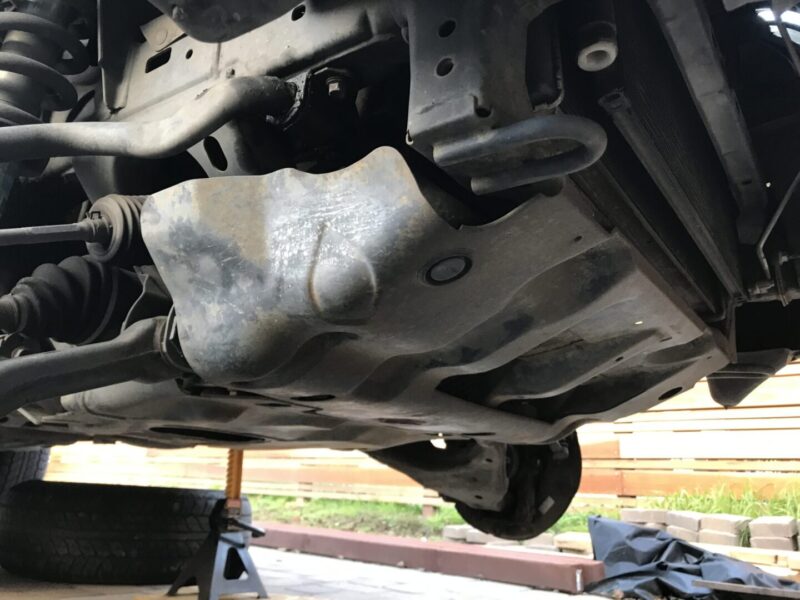
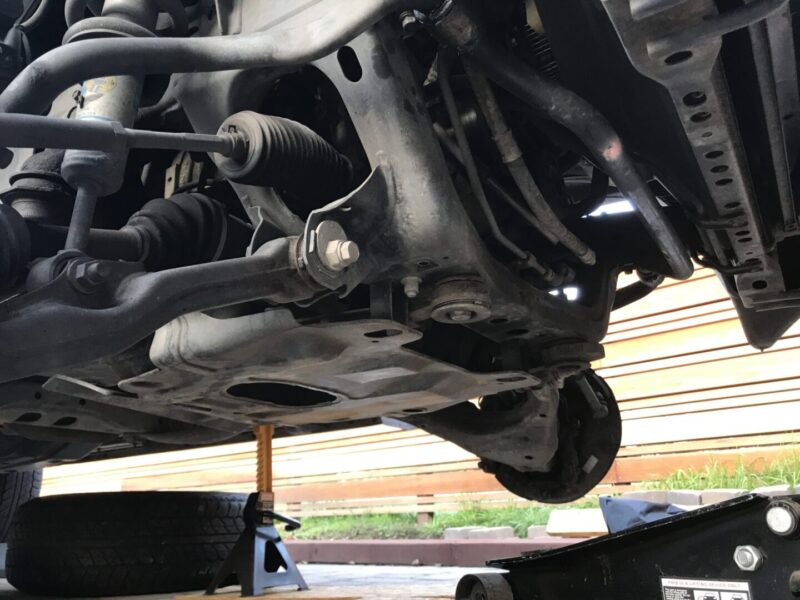
Mark the alignment cams with a paint marker so that they can be positioned back in place during re-installation. All I had was a black Sharpie so that’s what I used.
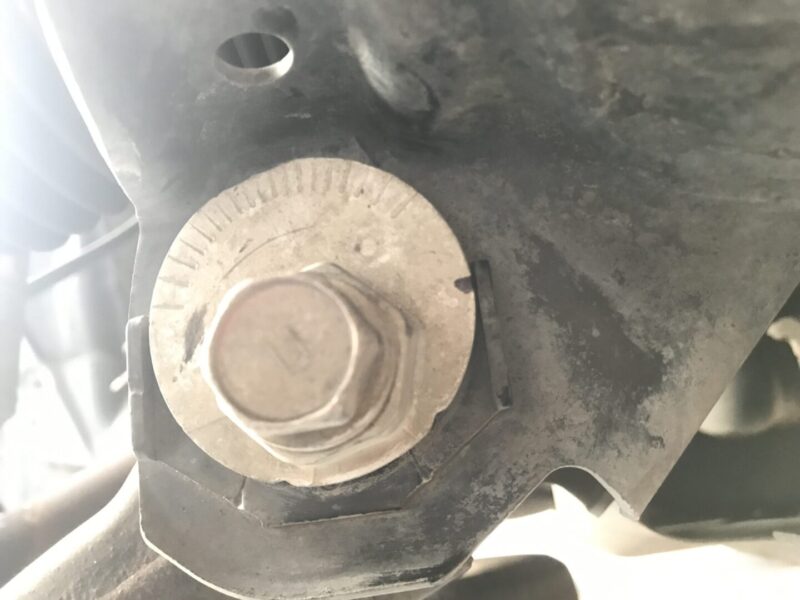
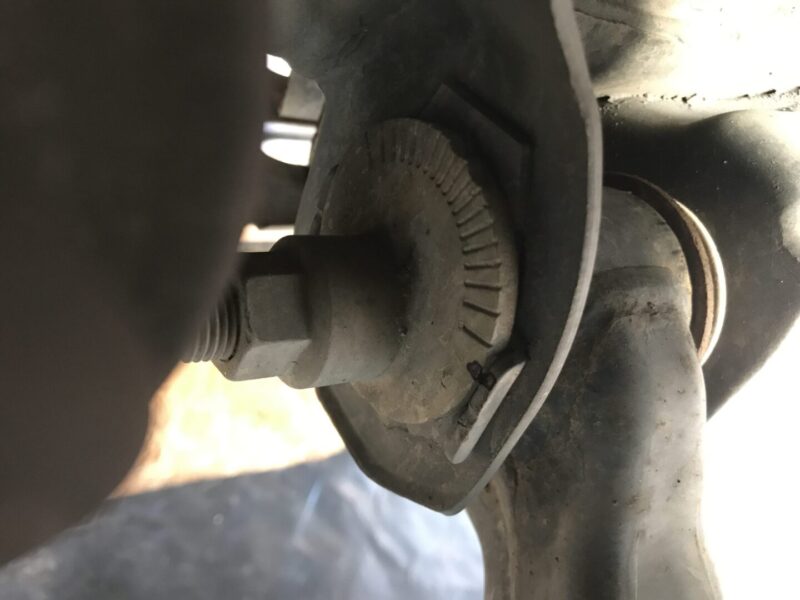
Loosen but do not remove these 19mm cam adjustment bolts. This will allow for more articulation of the lower control arm (LCA), which will allow for additional room to remove/install the front shocks/springs. Penetrating oil can be used if these bolts are stubborn to break loose. You may need to use a box end wrench on the nut on the other side of the cam adjuster to loosen this 19mm bolt.
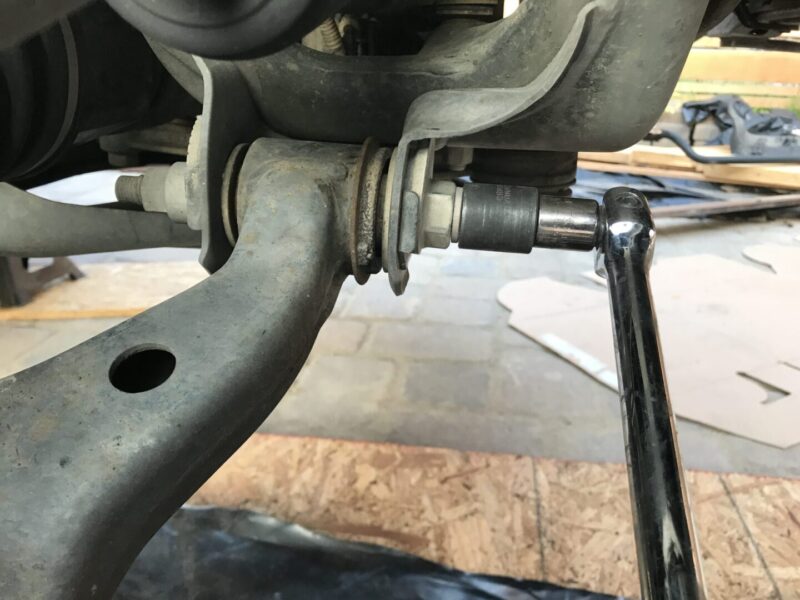
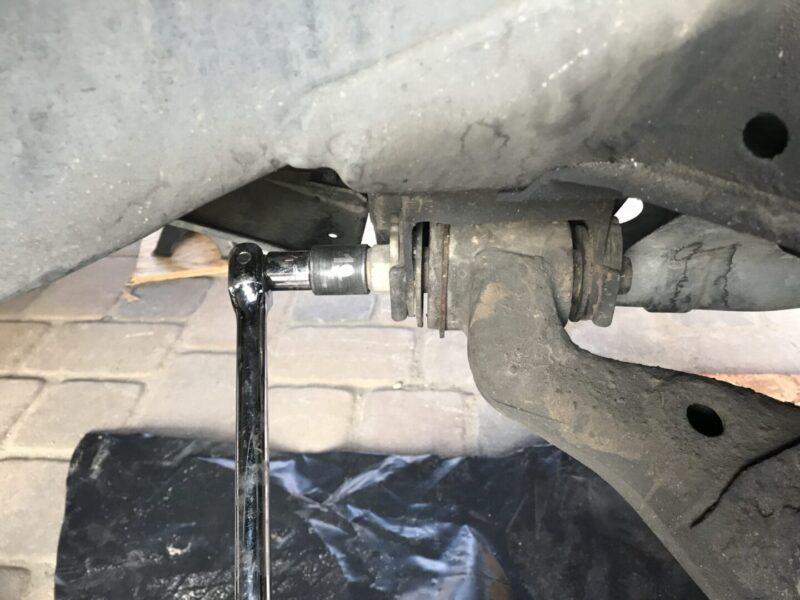
There are two lower ball joint mounting bolt (19mm) that needs to be removed as well. Once these bolts are removed, the end of the front LCA will be able to be separated from the wheel hub. Keep in mind that the two lower ball joint to lower bracket nuts flank the center castle nut. So removing the two nuts on both sides of the castle nut will allow the wheel hub to separate from the lower bracket.
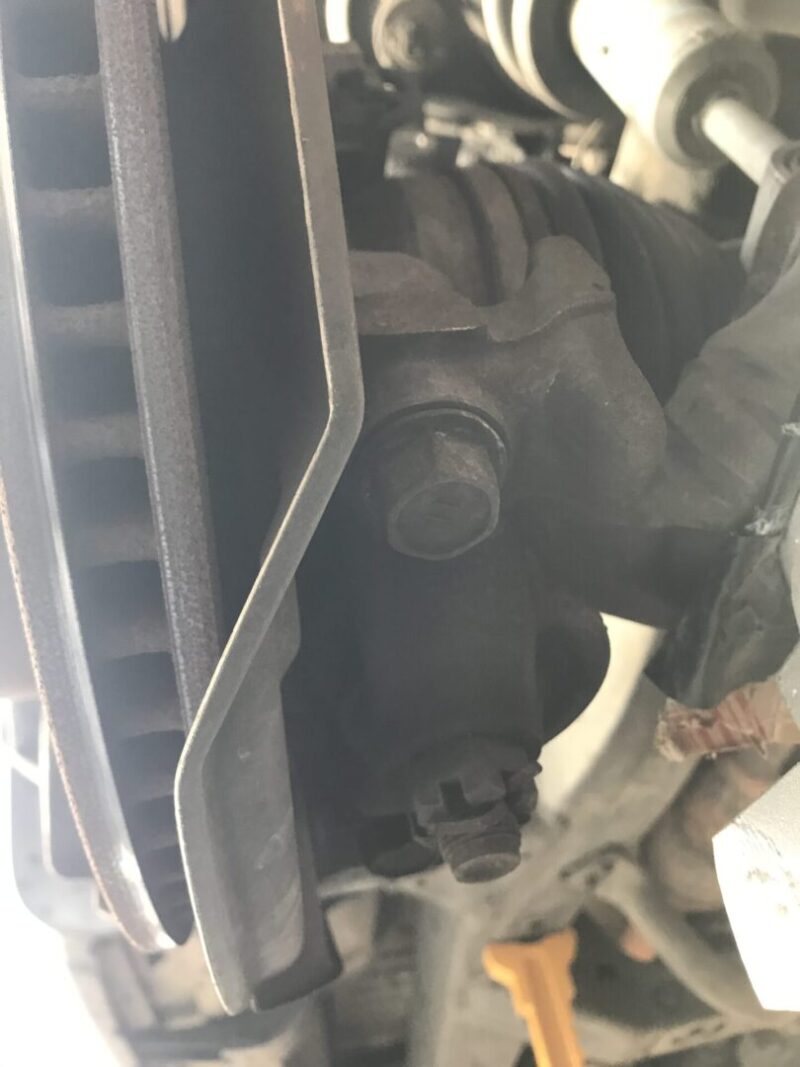
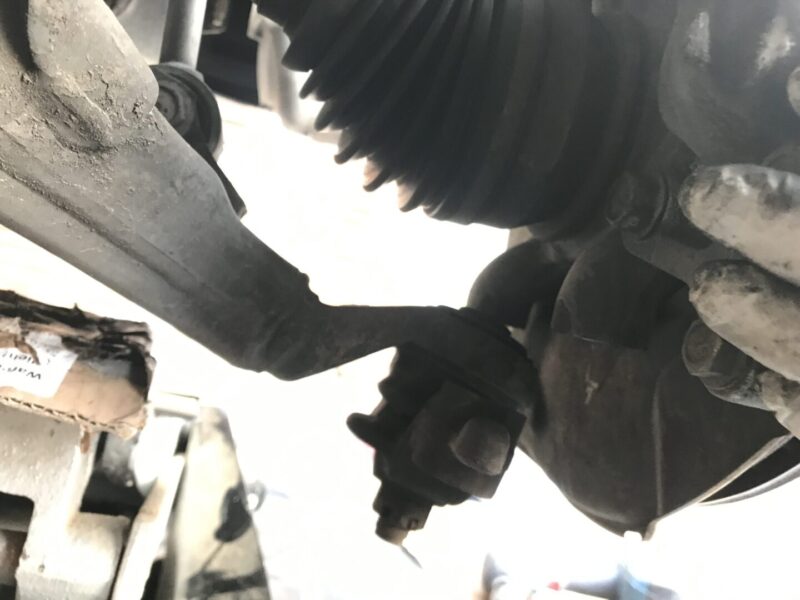
The last thing keeping the LCA from completely lowering out of the way is the shock. Loosen, but do not remove the 19mm lower shock mount nut; use penetrating oil if you need it. Keep the bolt and nut in place still as this is the only thing that is still keeping the front spring compressed. You still need to perform the “no spring compressor method” to decompress the spring, so it’s wise to keep the lower shock mount bolt/nut there for safety.
If you are replacing the entire strut assembly (spring and coil) and have a complete strut assembly to go back in, then the replacement is very simple. The spring is pre-compressed with the shock and is secured via the large center nut. The other three nuts that surround the center nut hold the strut assembly to the body of the vehicle.
Therefore, if you are simply replacing the entire strut assembly (coilover), then you can remove the three top mount nuts (that surround the center nut), and this will disconnect the strut assembly from the body. The whole strut assembly will have the shock and spring—still compressed with the center nut. You can then install a new strut assembly in the reserve of removal with those same (3) upper mounting nuts and not have to worry about the spring releasing its compression energy on you.
If you need to only replacing the springs or the shocks and springs you are installing are not pre-assembled, then you’ll need to find a way to decompress/compress the coil springs safely. You’ll need to either use a hydraulic spring compressor tool (the large stationary kind you might find in a shop), or follow the “No Spring Compressor Method”.
I don’t recommend using the coil spring compressors that are tightened down by a ratcheting tool as there are a plethora of issues you can run into with this type of hand tool. Some people run into problems with not being to compress the spring enough to fit the shock hardware and build quality is questionable depending on where you get them. There’s also elements of human error where these spring compressor tools are meant to be tightened down by hand and not an impact gun (which many people do to make things easier).
Anyway, I would always recommend having a shop do this kind of work for you as they will have the safest tools and expertise available to do this type of dangerous work. If that is not an option, I’d do the “No Spring Compressor Method” over using a spring compressor tool at home.
The “No Spring Compressor Method”
This method allows you to use the weight of the vehicle to de-compress the spring/coil. So far we’ve done the following to allow for the LCA to rotate down:
- disconnected the sway bar (via the end links) from the steering knuckle
- loosened the cam adjusters
- disconnected the lower ball joint
- (loosened lower shock connection: bolt and nut still in place for safety)
So at this point, the vehicle is propped up by the frame on jack stands and the front axle along with the front suspension components are hanging down. Essentially what you are doing with the “No Spring Compressor Method” is using the floor jack to hold that LCA up and all the spring’s energy in compression behind it. Then, since you’ve already disconnected and loosened the parts as mentioned above, you slowly lowering the floor jack to carefully decompress the spring within the wheel well. In my opinion when this is done in a safe and controlled manner, it can be much safer and effective than using a standard spring compressor tool.
Installing the Front Shocks and Springs
Bring a floor jack up to support the lower control arm (LCA). You don’t want the LCA to let go while you’re decompressing the spring. There is a lot of energy being stored in the springs and this can be very dangerous—even fatal if not handled properly. I used some cardboard to add additional friction between the metal surface of the LCA and the floor jack.
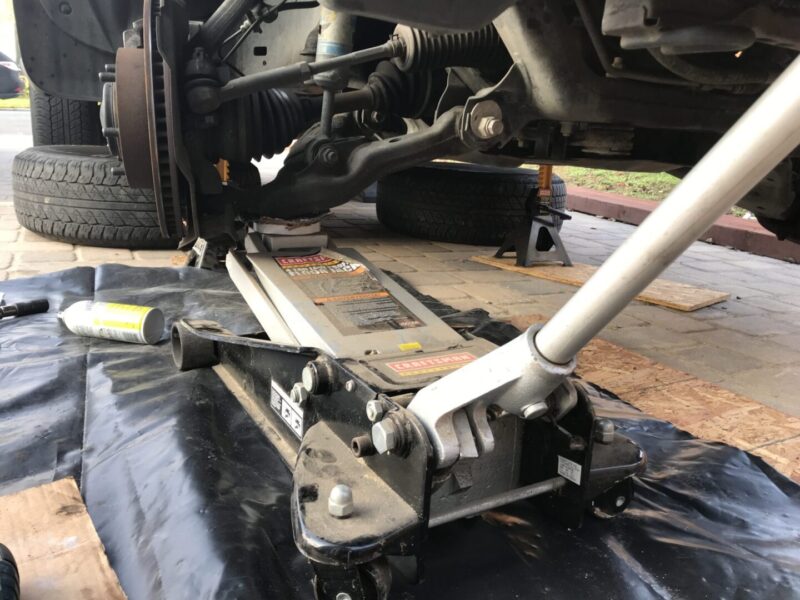
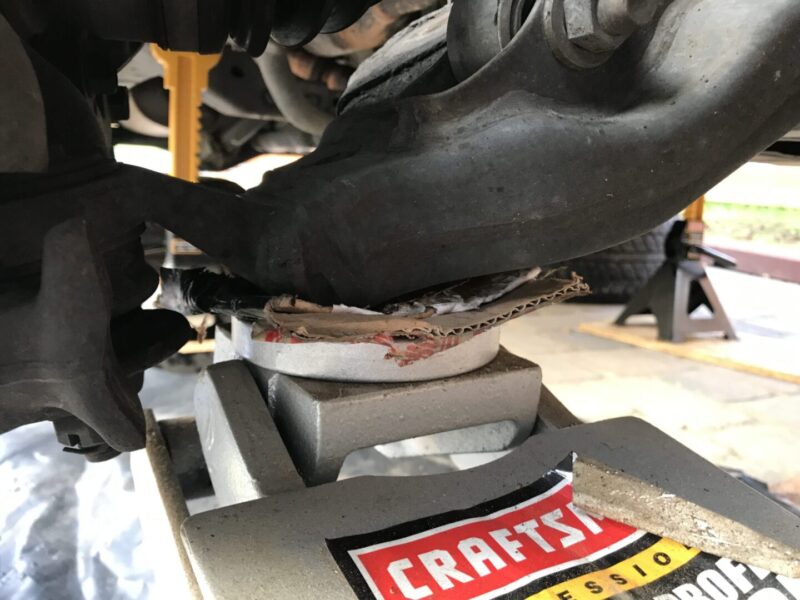
Now, the only thing left to remove in order to allow the spring to decompress is the center top nut. Ensure the floor jack is securely and safely supporting the LCA. This means the hydraulic valve needs to be closed so if the spring decompresses and pushes the LCA down into the floor jack, then the floor jack should hold.
Disconnect the center top nut with a box wrench and hold the center bolt with either another wrench or allen wrench (sometimes there is an allen wrench slot in the top of the bolt) to keep the center nut from spinning.
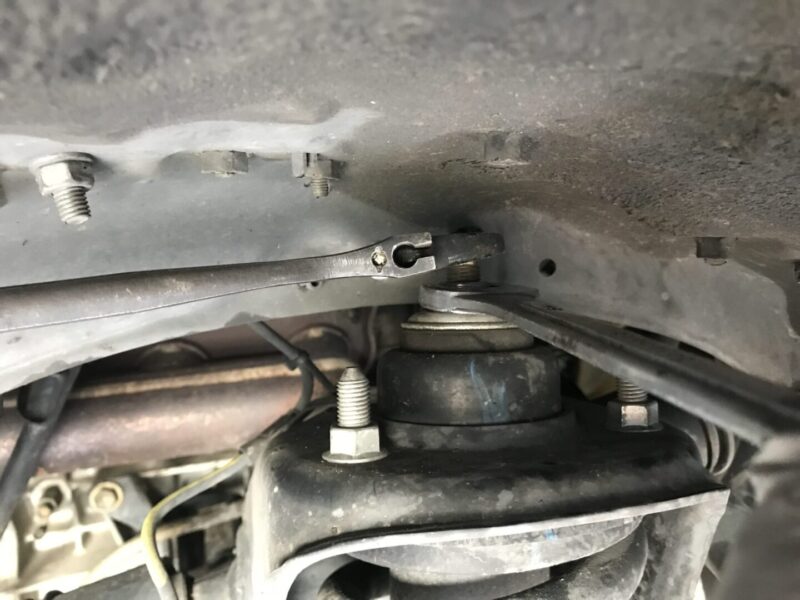
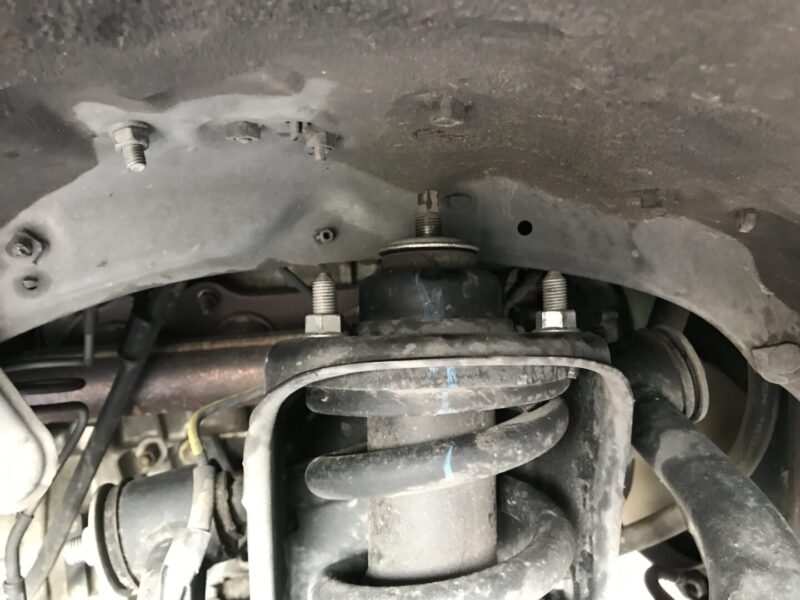
With the center nut removed, the spring is held in its compressed position by the floor jack. With the way that I angled my floor jack, I can go around to the front of the car and slowly lower the jack to decompress the spring. Just in case the spring lets go and/or the LCA flops out from the floor jack, I will at least be away from the wheel well area where I might get injured/killed.
Slowly, and I mean slowly, lower the control arm and decompress the spring until it is fully decompressed. As you release all the energy from the spring, you will hear all sorts of disconcerting creaks.
When the spring is fully decompressed, you can no longer have the danger of a compressed spring on your hands. You should be able to move the spring around and can feel that there is no compression on the spring.
Now, you can now remove the lower shock to LCA bolt. You can tap the bolt out with a hammer since you’ve already loosened this connection.
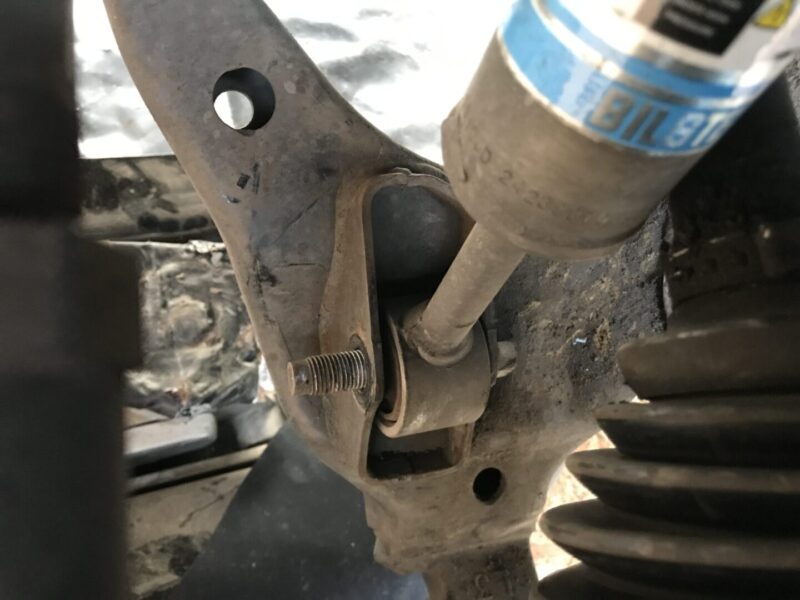
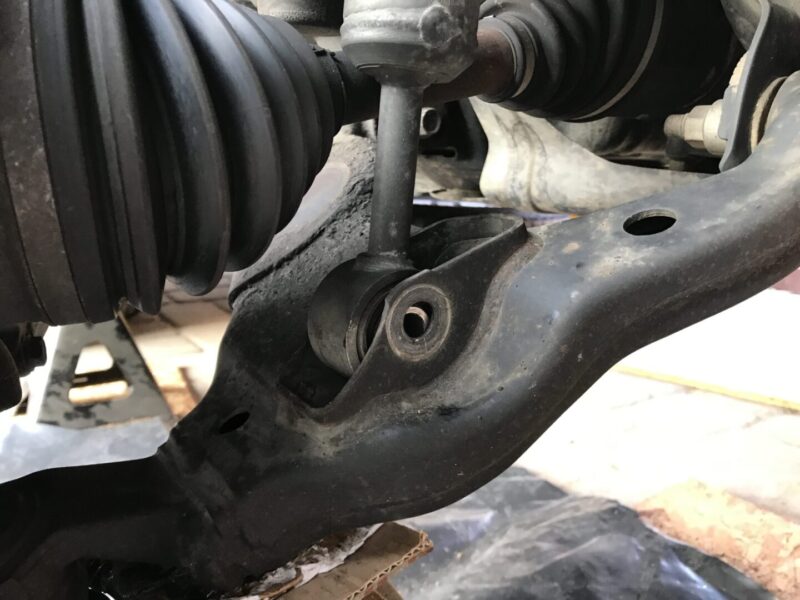
Now, the full strut assembly should be able to come out.
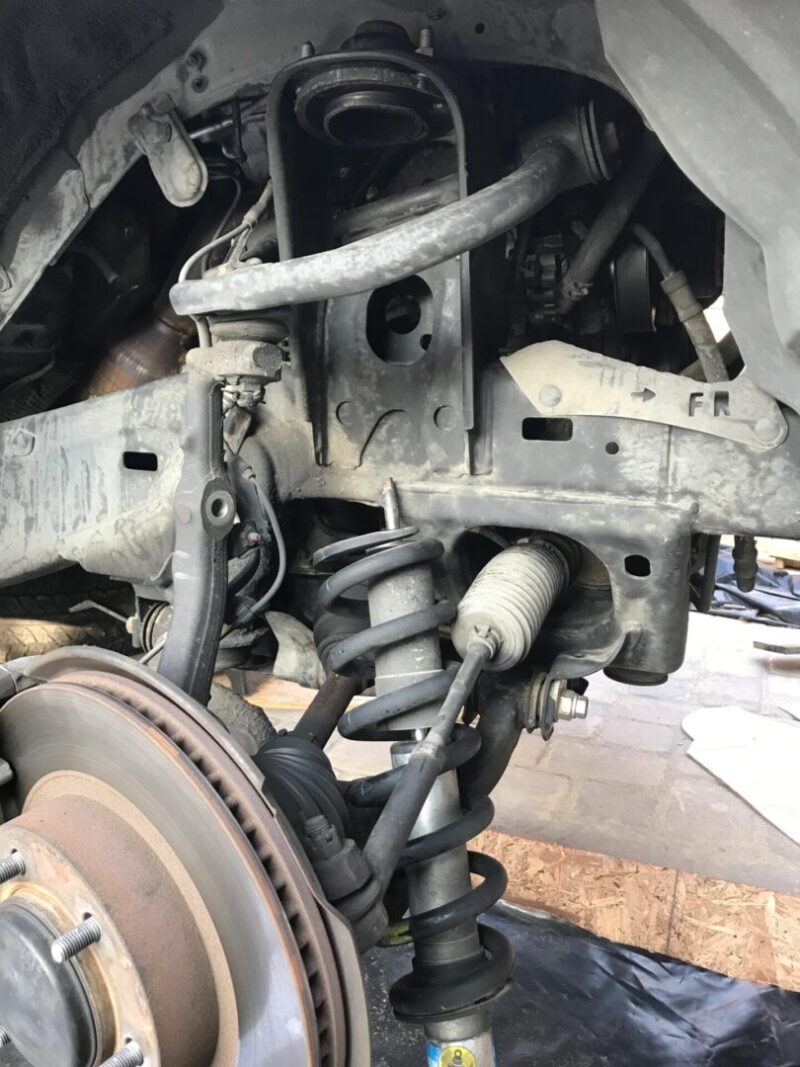
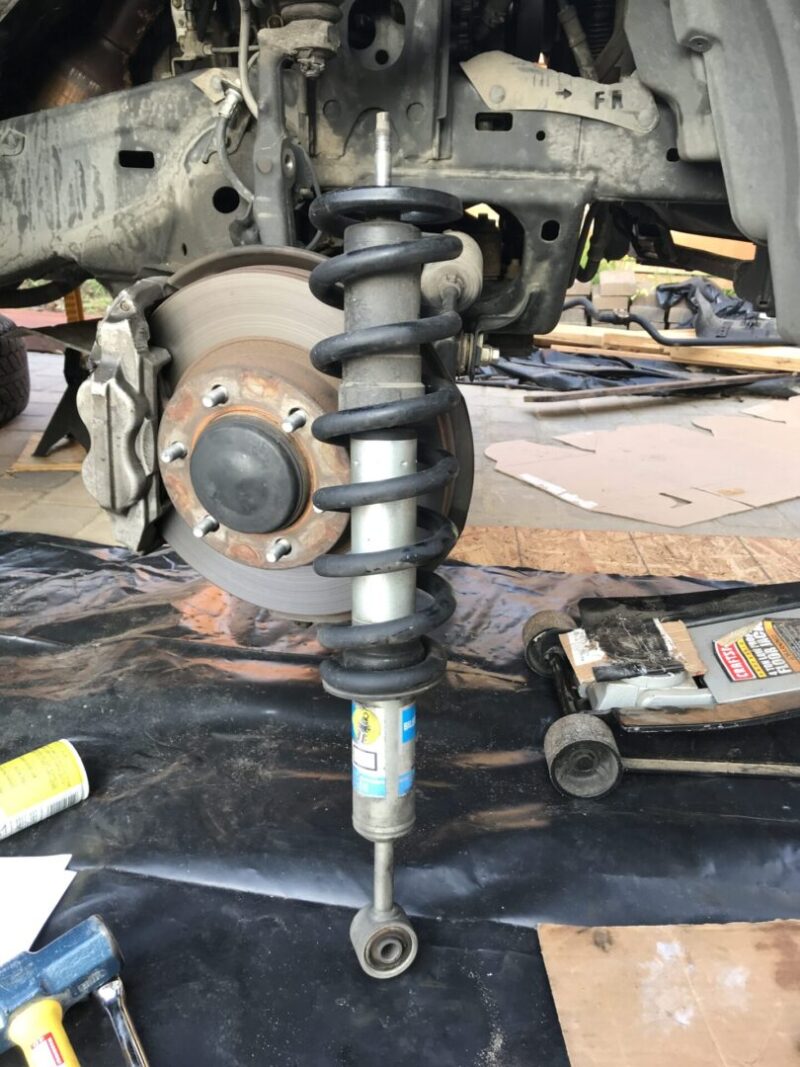
The fully assembled coilover (minus the shock top hat and hardware that will go above the top hat) and carefully guide it into position.
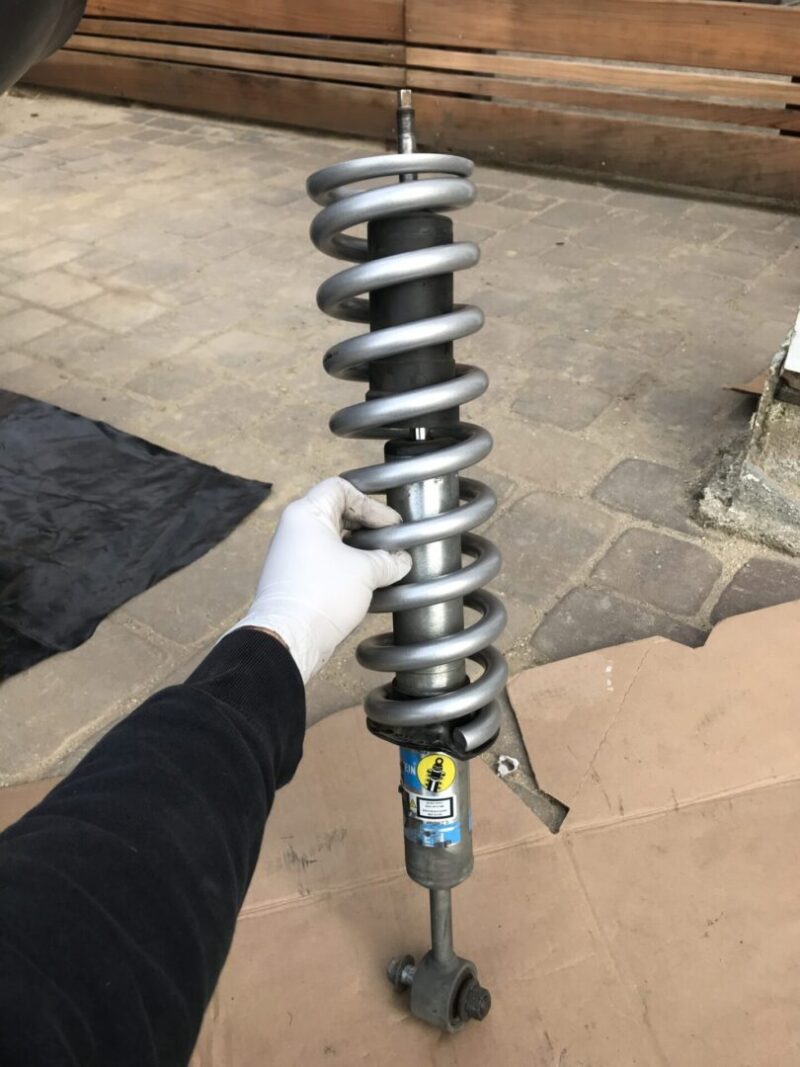
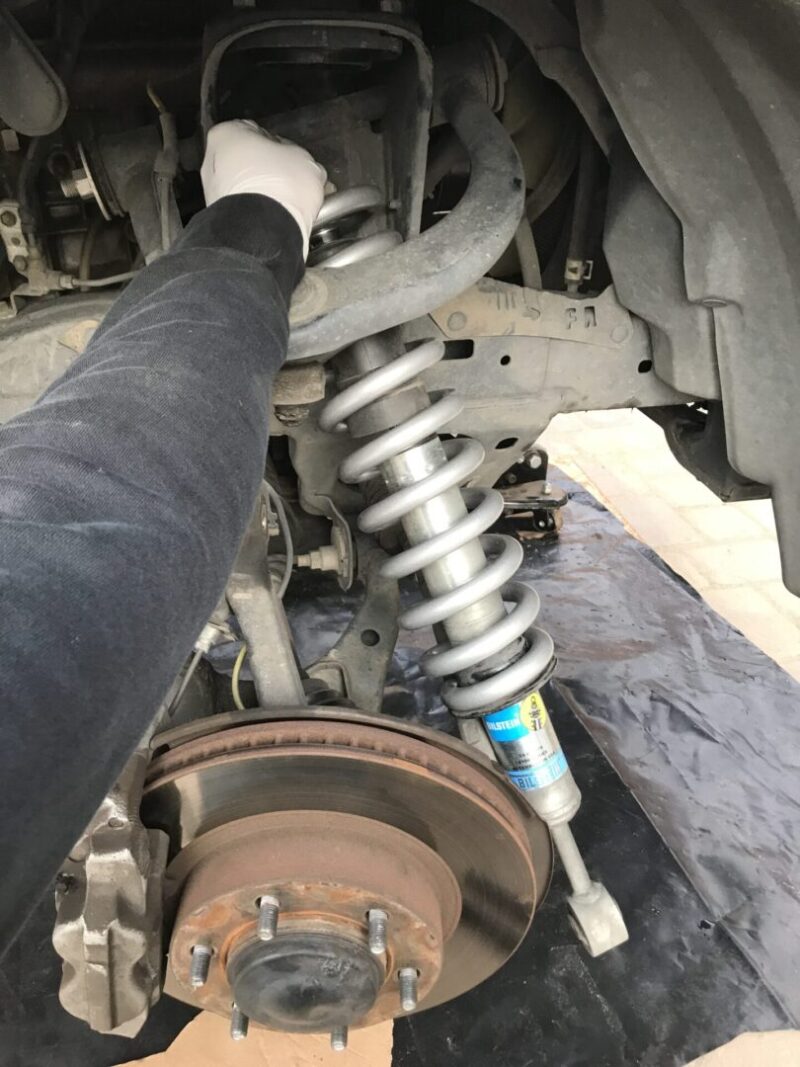
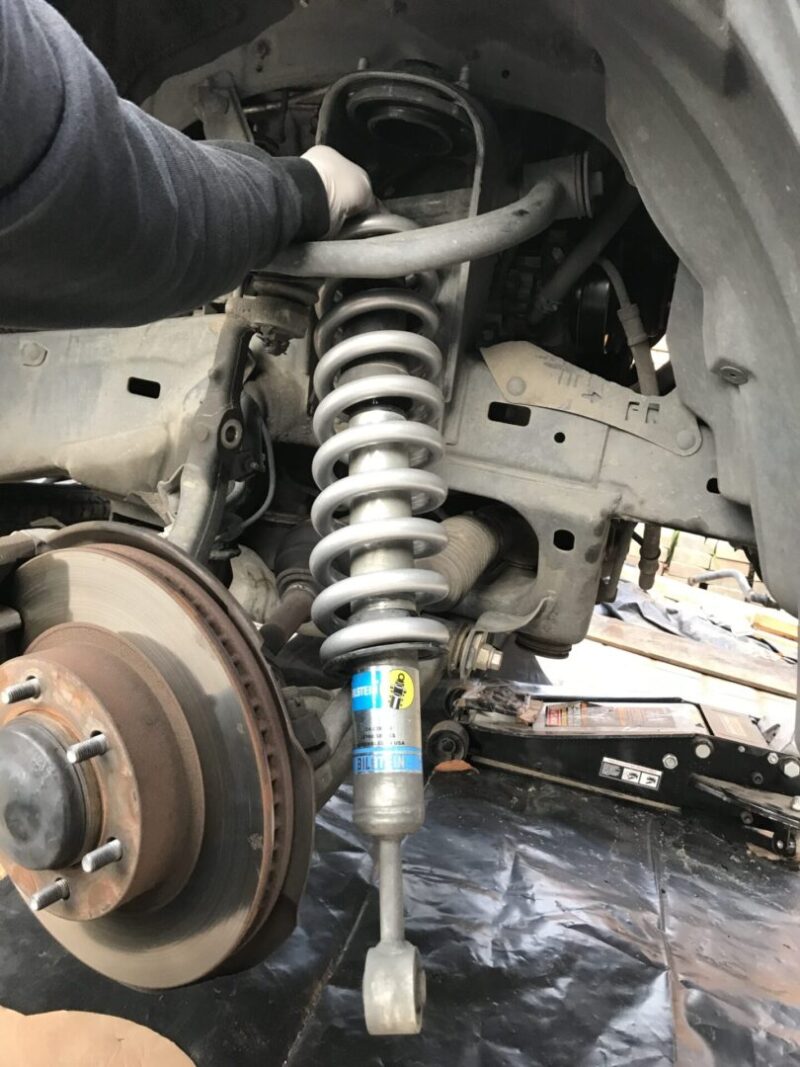
Rotate the shock itself so that the lower mount hole lines up with the lower control arm opening.
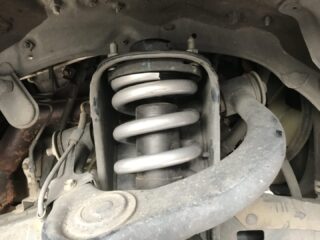
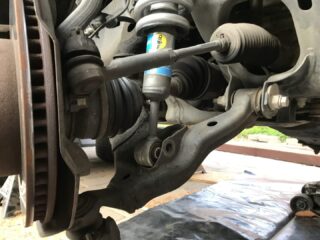
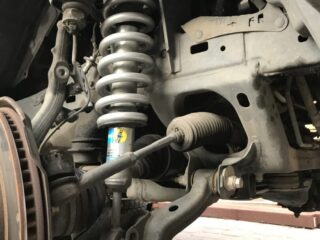
Press up on the shock and move the LCA down so that the lower mount hole lines up with the LCA mount. Then insert the lower mounting bolt through and thread the nut in and hand-tighten; you’ll still need to torque this after the strut assembly is reinstalled.
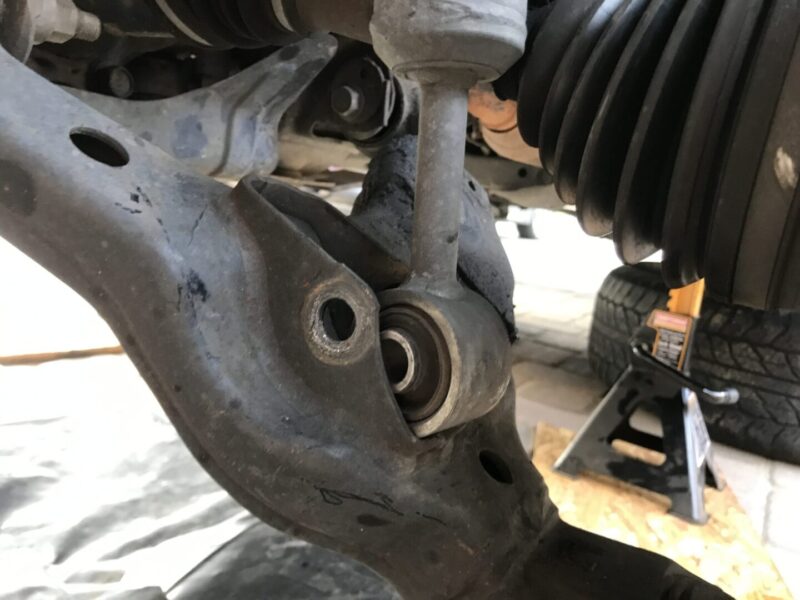
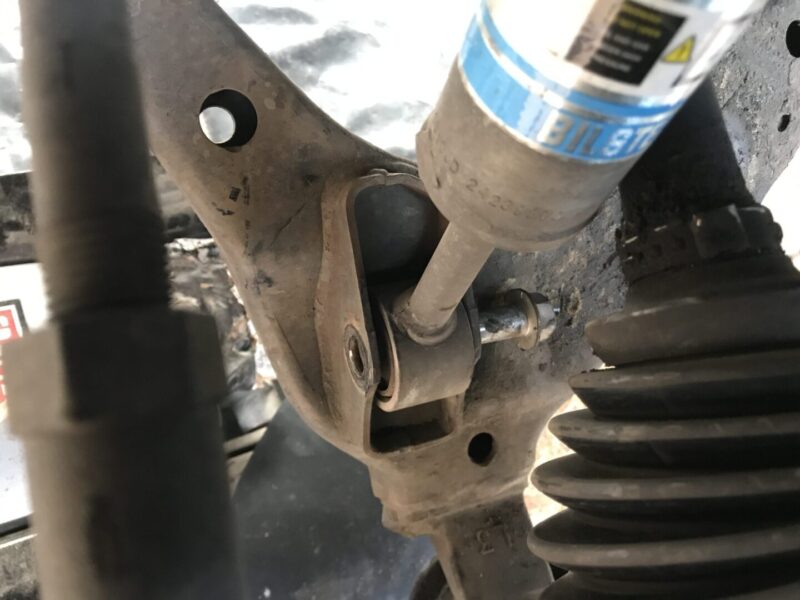
Make sure the coil spring is rotated within the shock so that the top and bottom of the coil matches the top and bottom seats.
Now, get the floor jack into position so that when it jacks up the lower control arm, it contacts the very end of the LCA. This will be the same position in which you lowered the LCA previously with the floor jack.
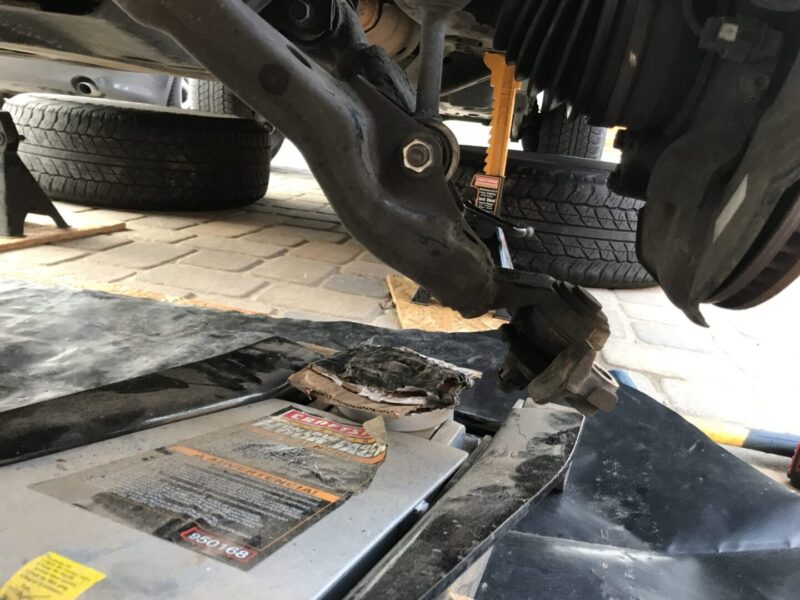
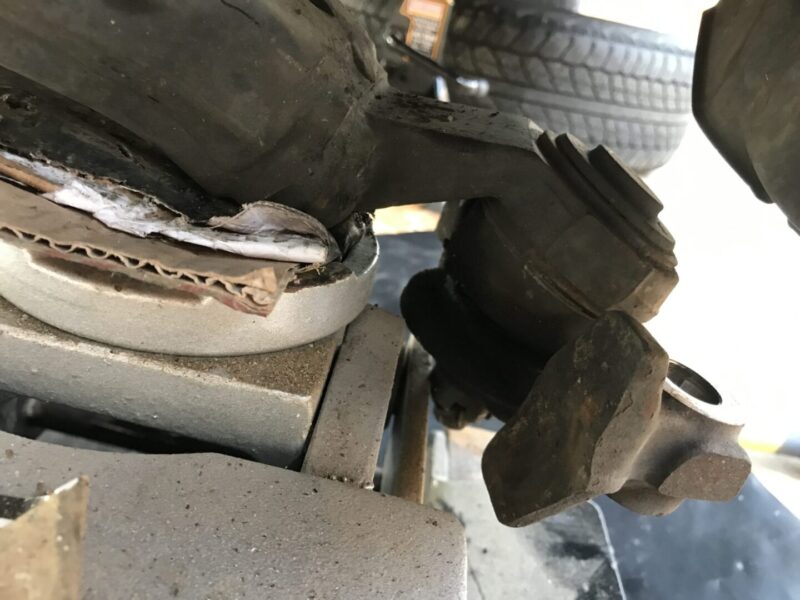
Now, slowly jack up the floor jack and you will see the LCA begin to lift the strut assembly into place. Remember that prior to raising the whole assembly with the floor jack, the top mounting bolt of the shock is sitting right below the level of the top strut mount. Therefore, when you raise the whole assembly with the floor jack, you need to do it very, very slowly with very slight increases in height.
As you do this, you can go back to the wheel well and make sure that you guide the top shock mount bolt through the top opening. If you don’t guide it through this opening properly, you’ll basically be raising the top shock mount bolt right into the strut mount (not good).
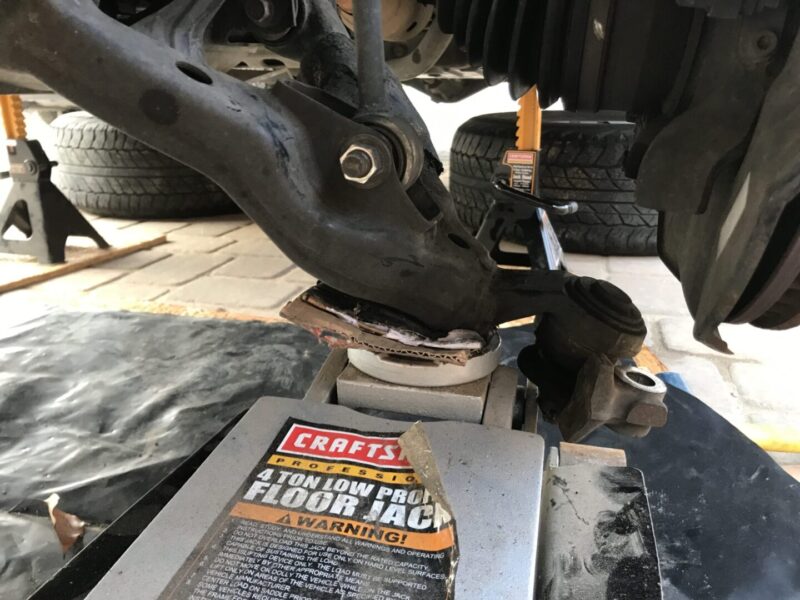
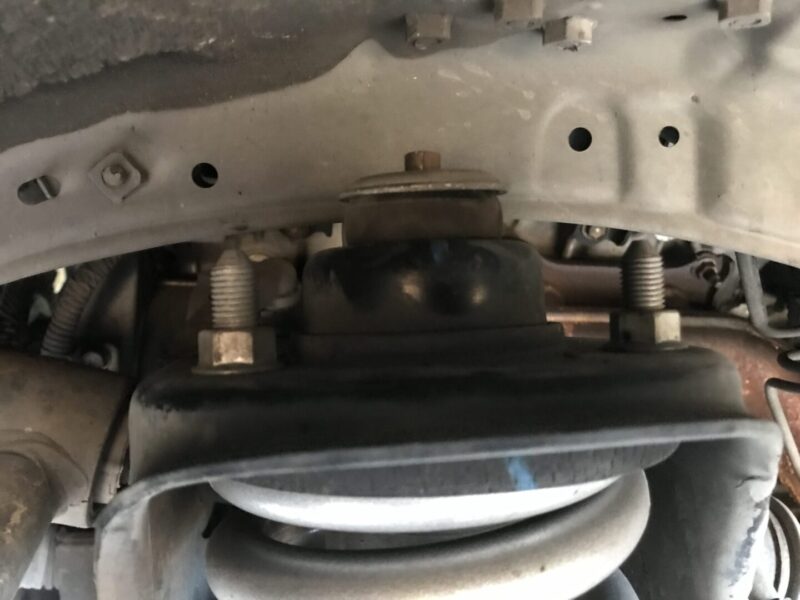
Continue to slowly jack up the LCA (while guiding the upper shock mount bolt through) until you see the bolt start to protrude through the top strut mount. You’ll need to get it jacked up enough to where there is enough thread to fit the remaining hardware: the top bushing, bushing retainer washer, and nylok nut. Fit these parts onto the upper shock mount bolt and then screw in the nut until you have full engagement.
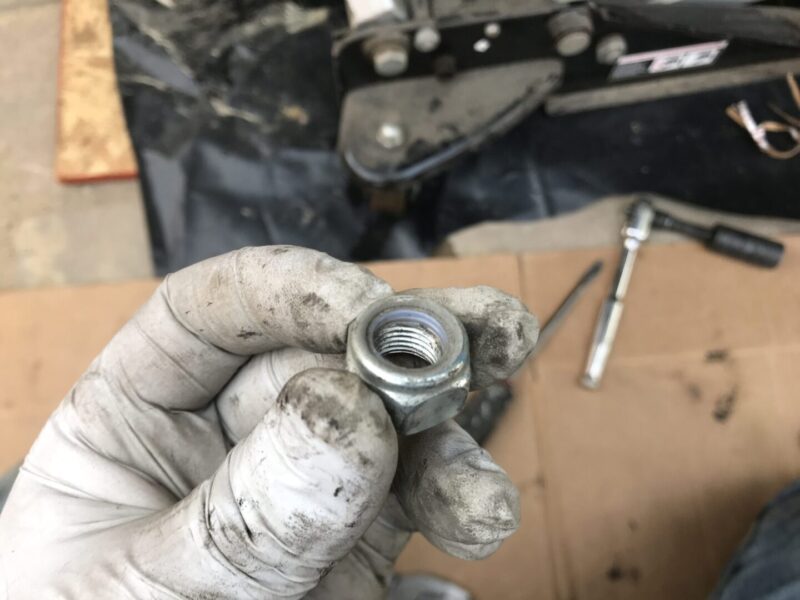
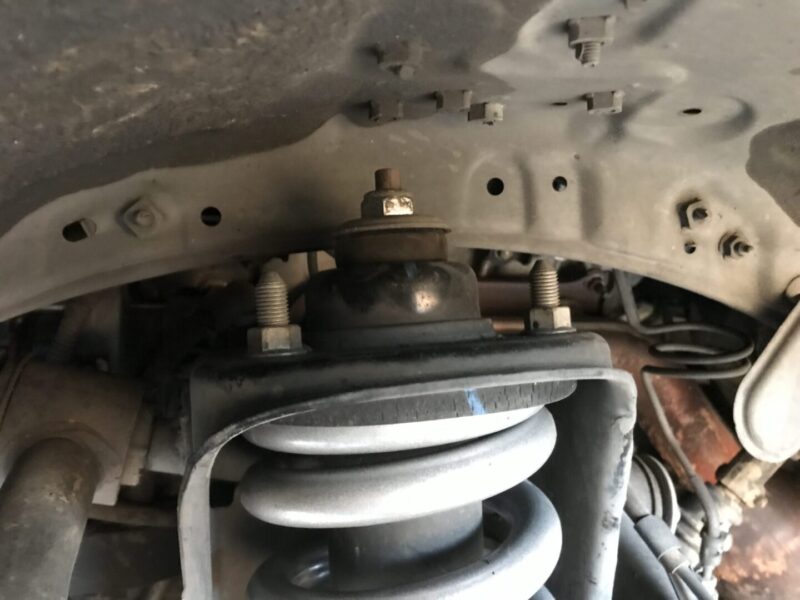
I couldn’t get a torque wrench in here, so I tightened the center nut down so that there is enough thread engagement with a little extra bolt thread showing. This can be seen below.
Just like disassembly, you might need an additional wrench or allen wrench to hold the bolt in place while tightening the center nut.
If you are reinstalling a coilover (shock and spring pre-assembled) then you would install this in place without the floor jack, and by securing the coilover in place with the lower shock mount bolt/nut and the three upper shock mount nuts.
Hand-tighten the lower front shock to LCA 19mm nut/bolt. If you had replaced the top strut mount bushing, you’ll need to torque the (3) 15mm upper mount nuts to 47 ft-lbs.
The (2) lower ball joint to lower bracket nut needs to be reinstalled and torqued to 103 ft-lbs. I use some blue threadlocker to help with keeping this connection secure.
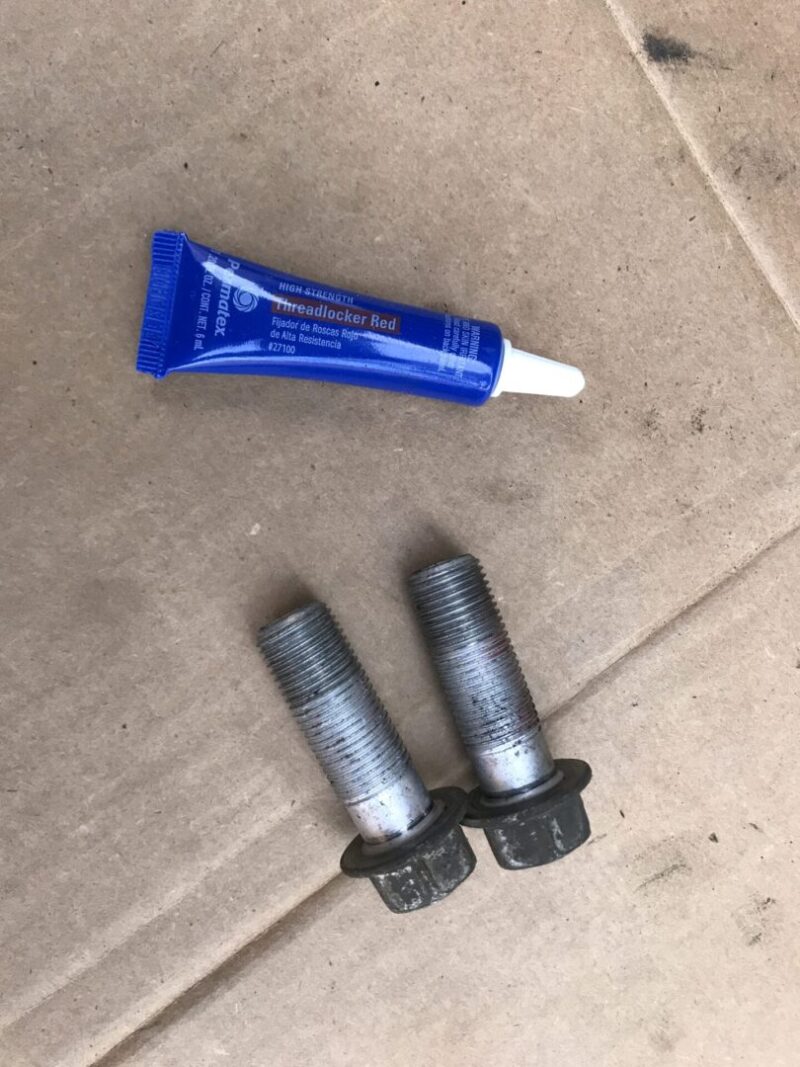
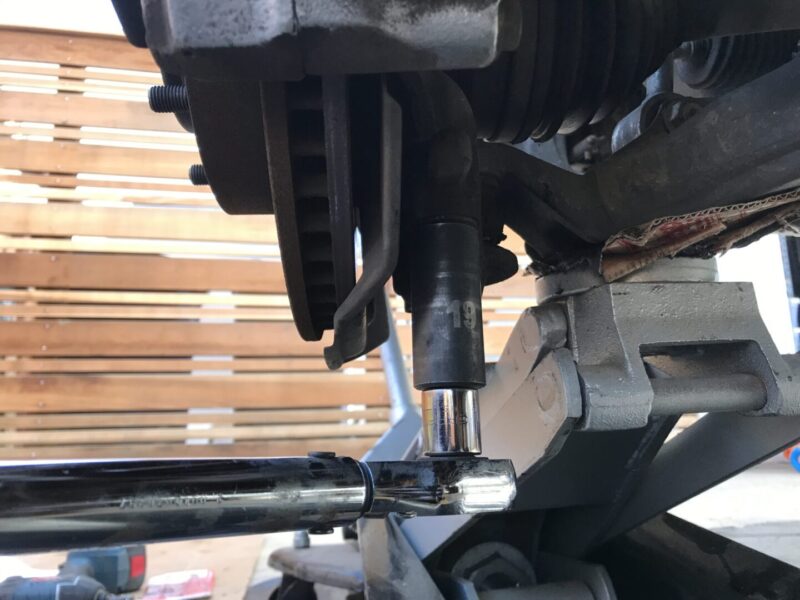
Finally, reinstall the front end links to the steering knuckle and hand-tighten these snug.
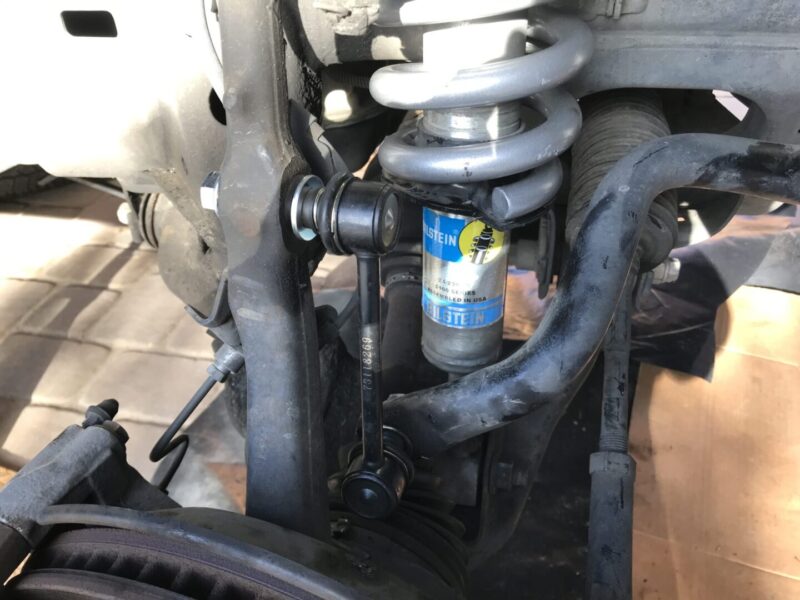
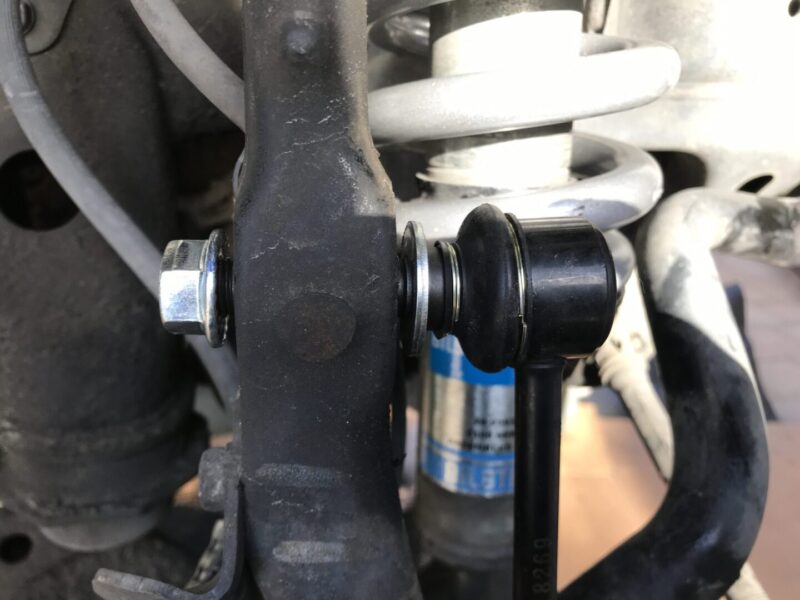
Repeat this for the other front side of the vehicle and the front shock and coil replacement is complete. There is one last thing to do however, and that is to torque all movable suspension components when the weight of the vehicle is on the axles. You don’t want to torque everything when the vehicle’s axle is drooped down. You want to do this when the vehicle weight is on the suspension.
Lower the vehicle back onto the ground and begin torquing down all of the components.
Tighten the 19mm shock to lower LCA nut/bolt to 100 ft-lbs.
Torque down the front end links that you previously tightened snug to about 50 ft-lbs.
The alignment cams should be in about the same position of where you marked them. This should be torqued down to about 100 ft-lbs. Getting the alignment cam adjustment back to its original position allows you to safely run the vehicle to an alignment shop, where they can do a full alignment based on your new suspension components.
Reinstall the front skid plate and the front shock and spring assembly is now complete. My front Eibach lift springs paired with the Bilstein 5100’s (on the first clip setting) gave me an additional 3″ of lift in the front. The front shock and coil replacement was not very difficult to do. With the “no spring compressor” method, I was able to safely decompress the existing strut assembly, as well as confidently reinstall the assembly. I’m extremely pleased with the result.
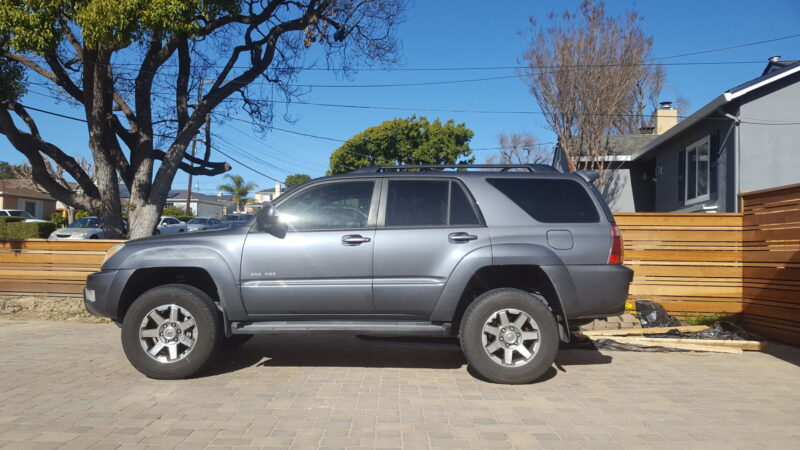
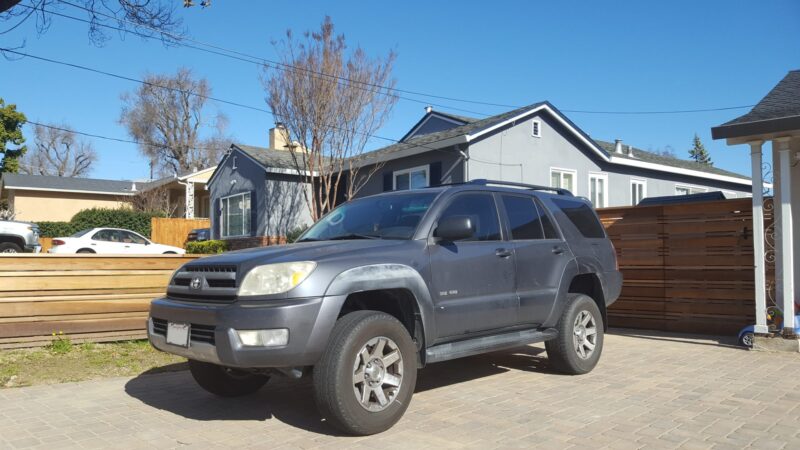


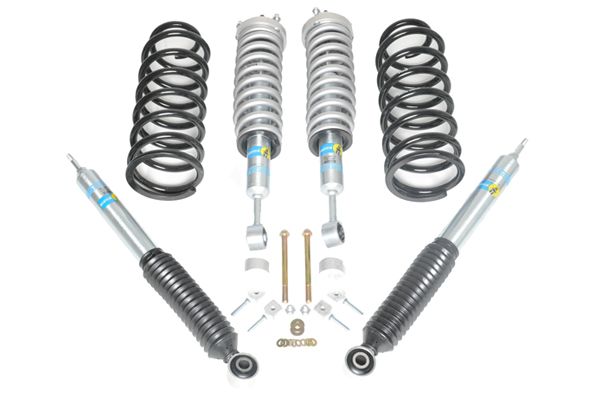
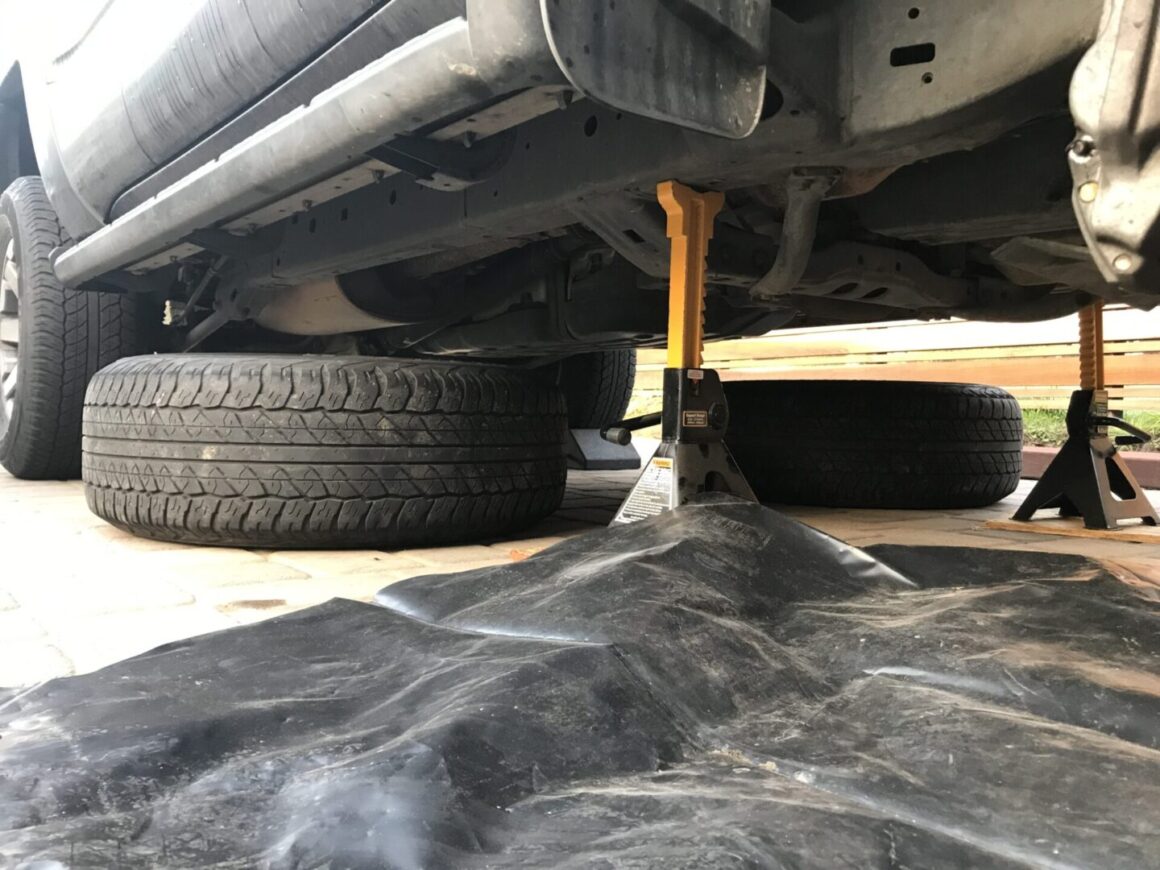
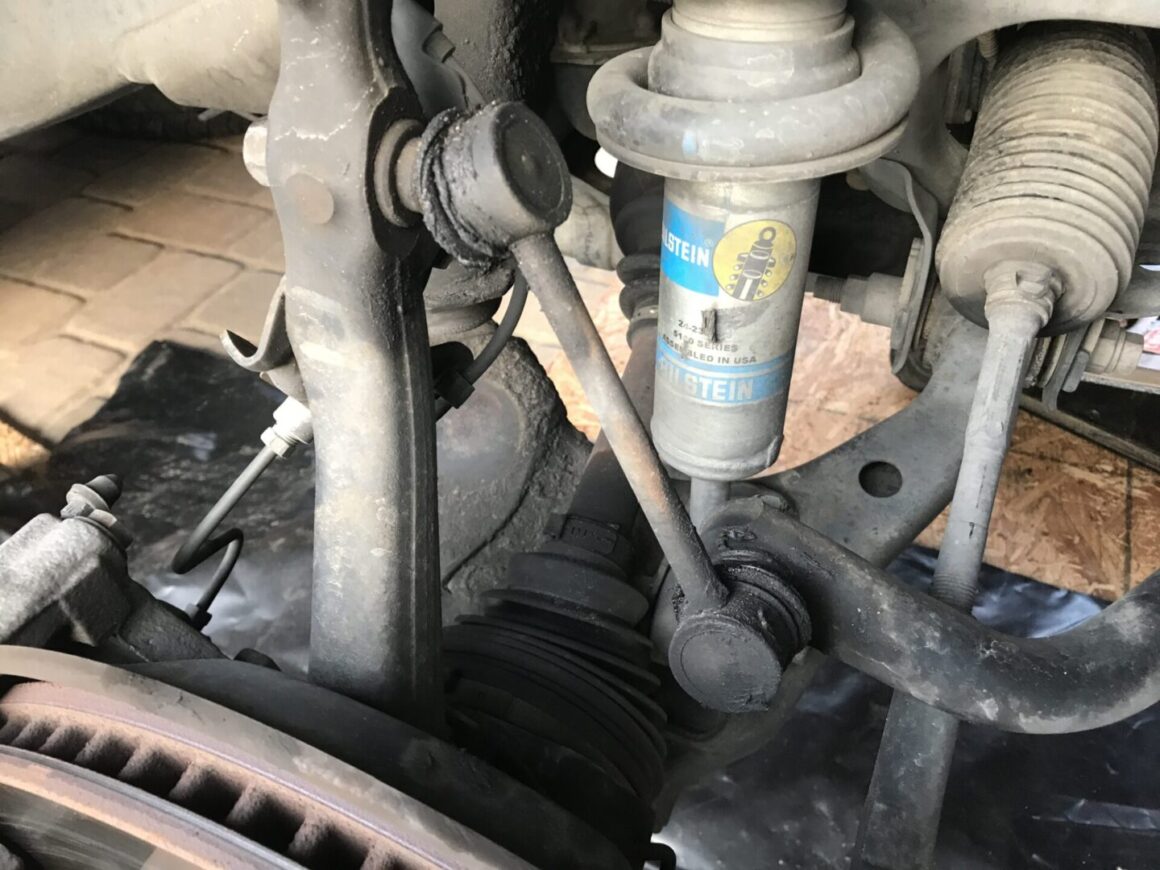
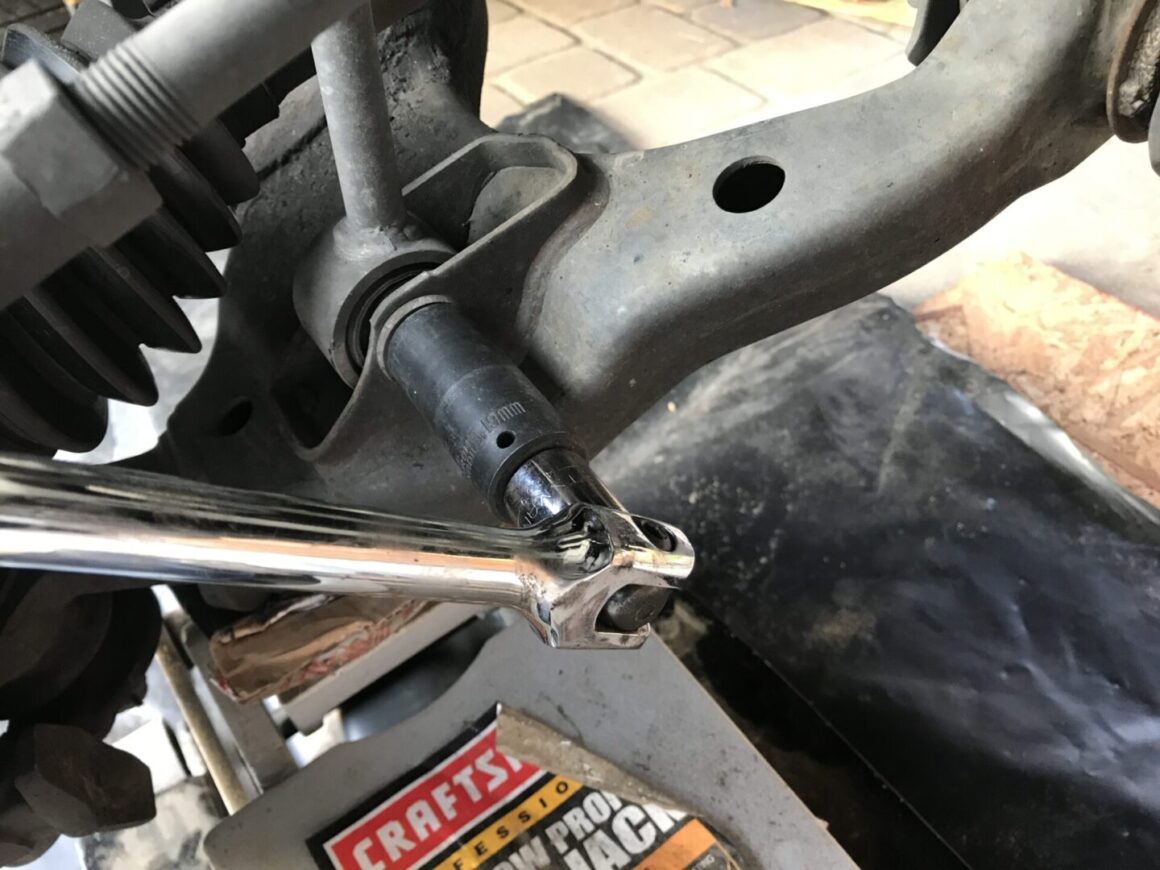
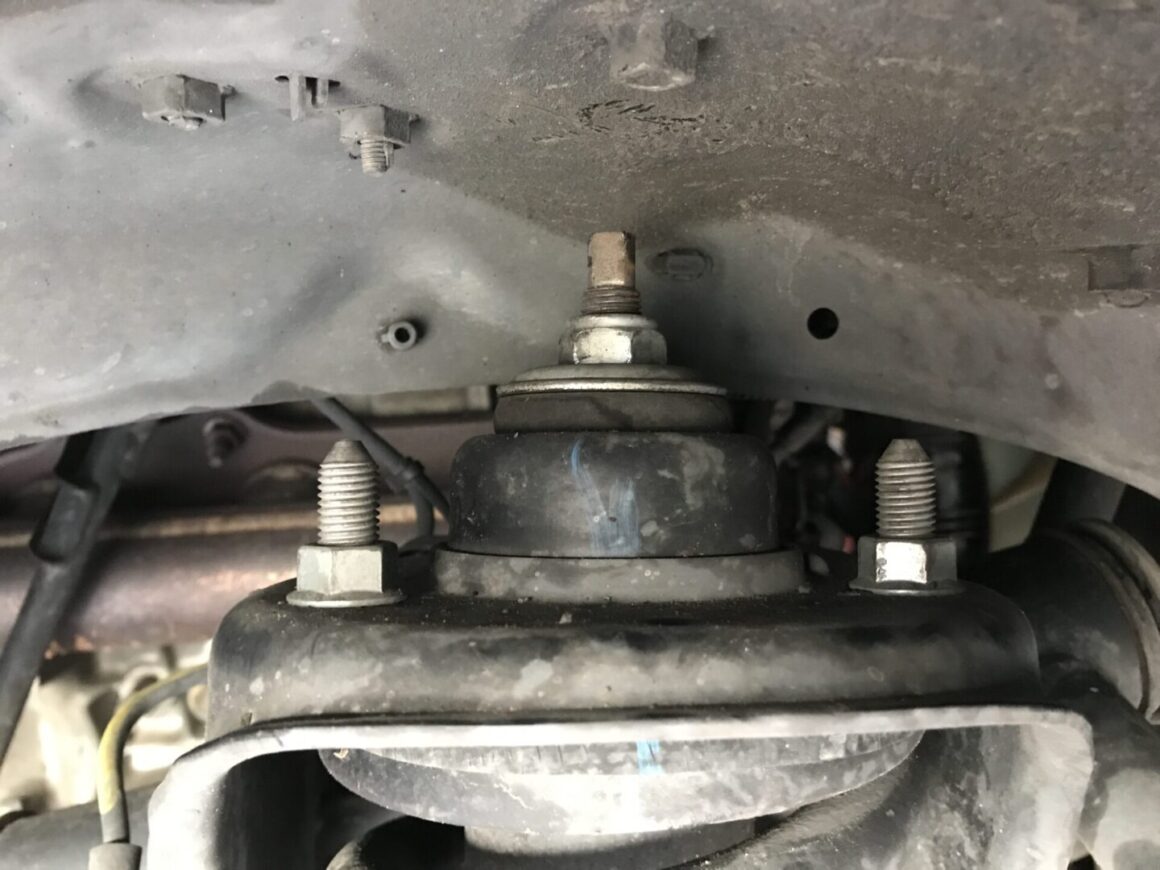
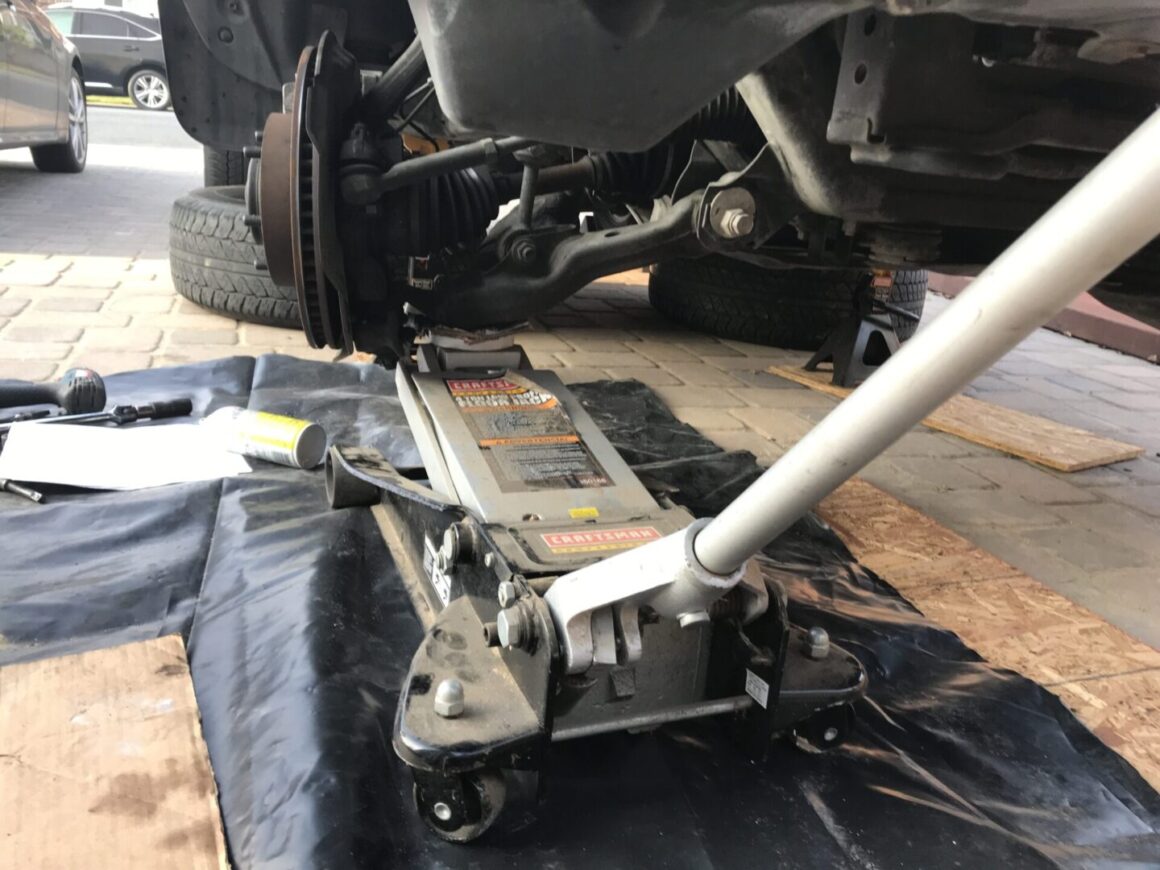
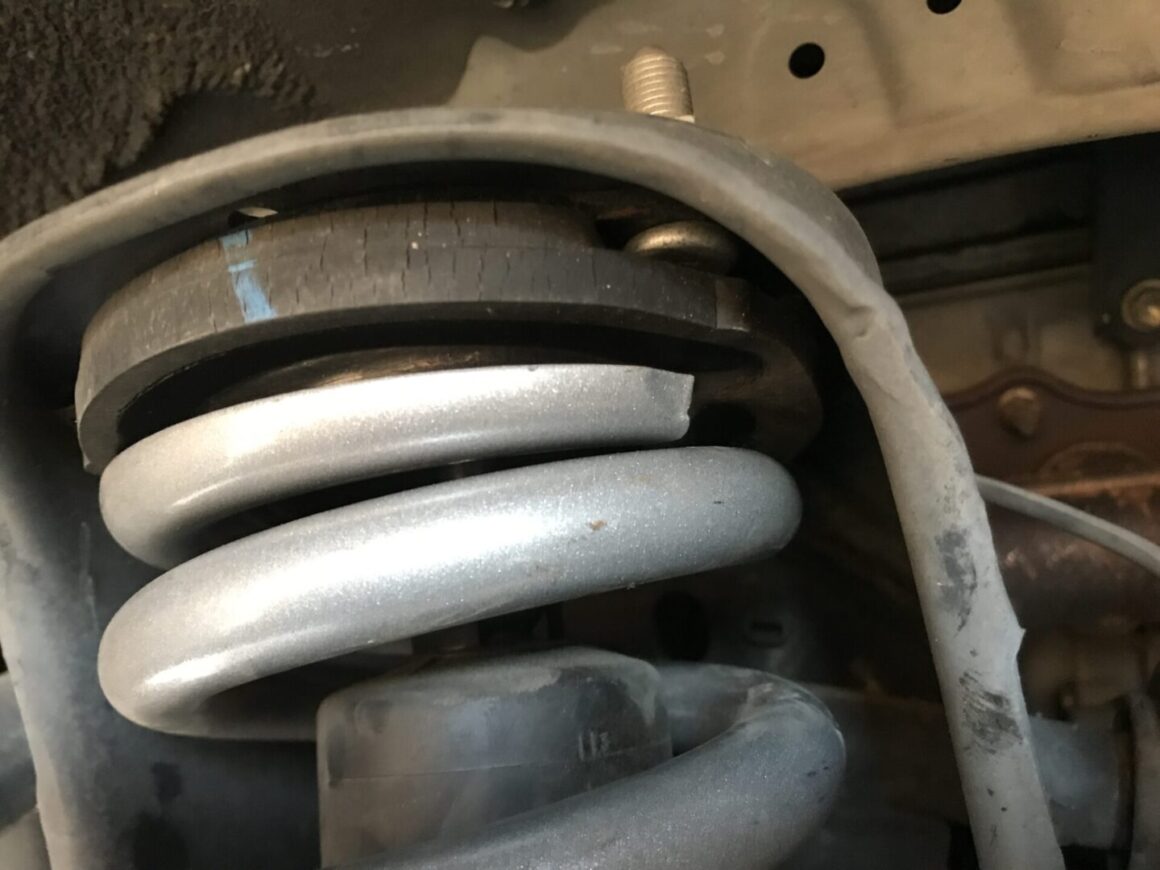
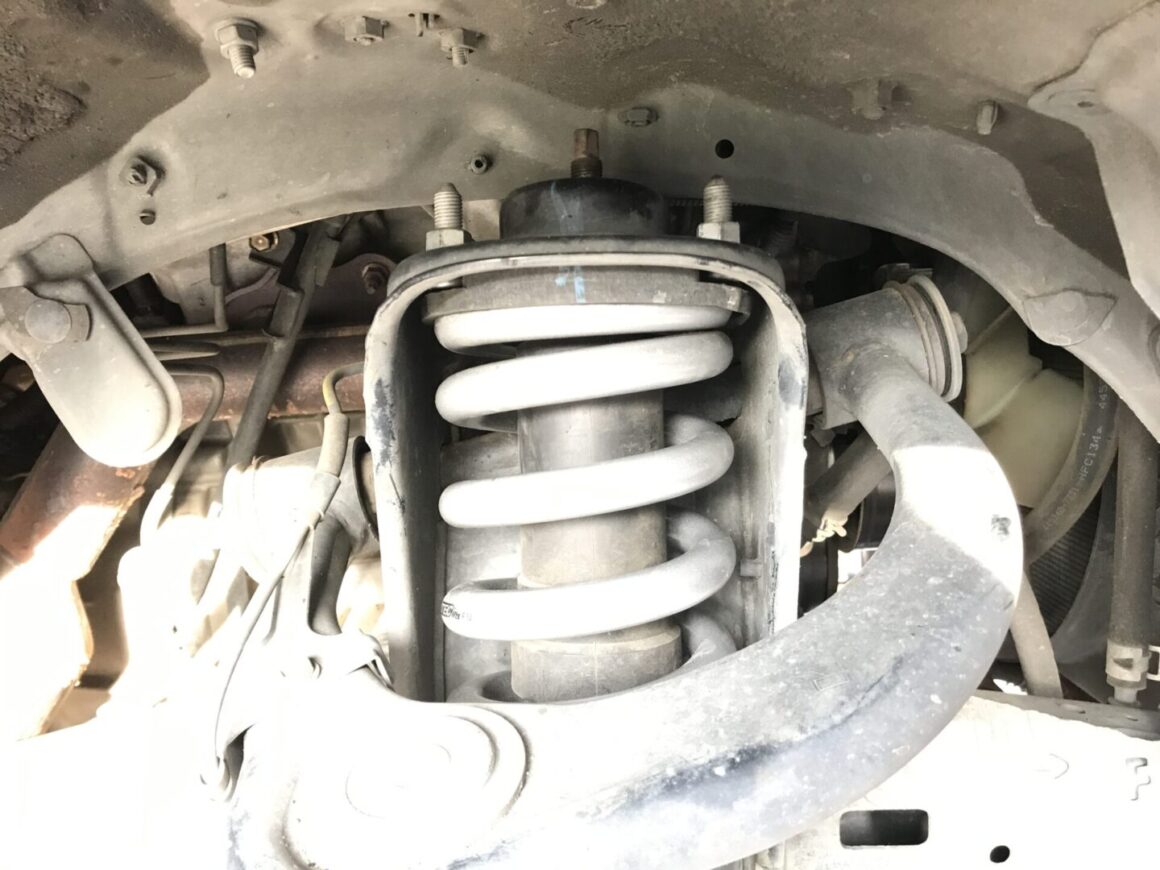
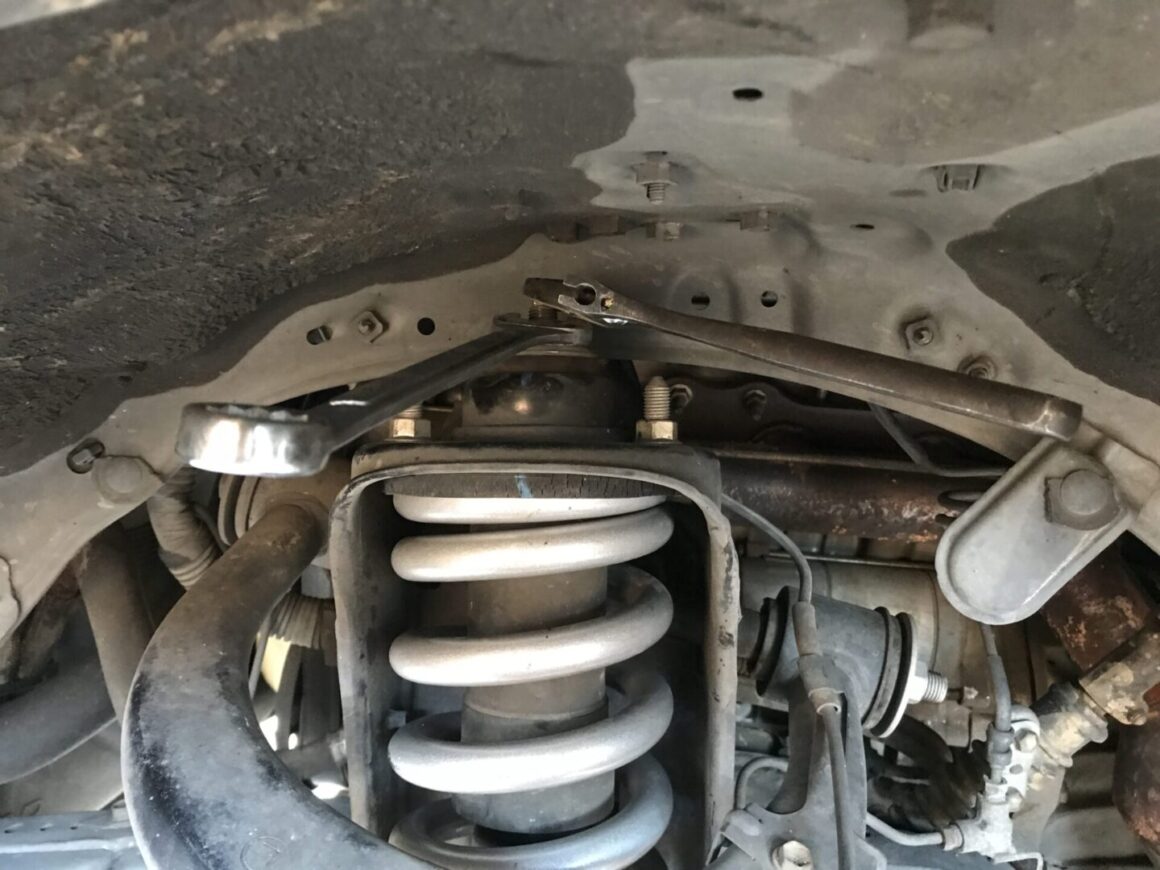
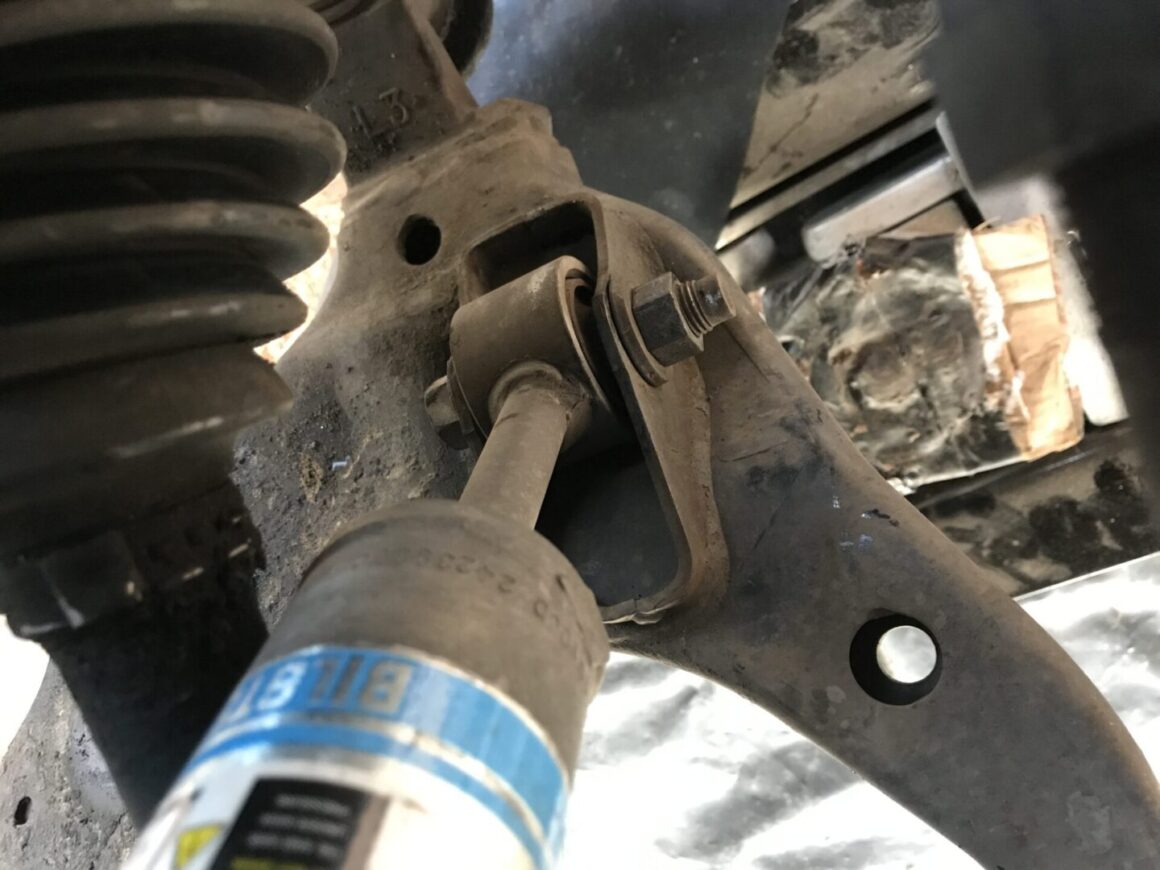
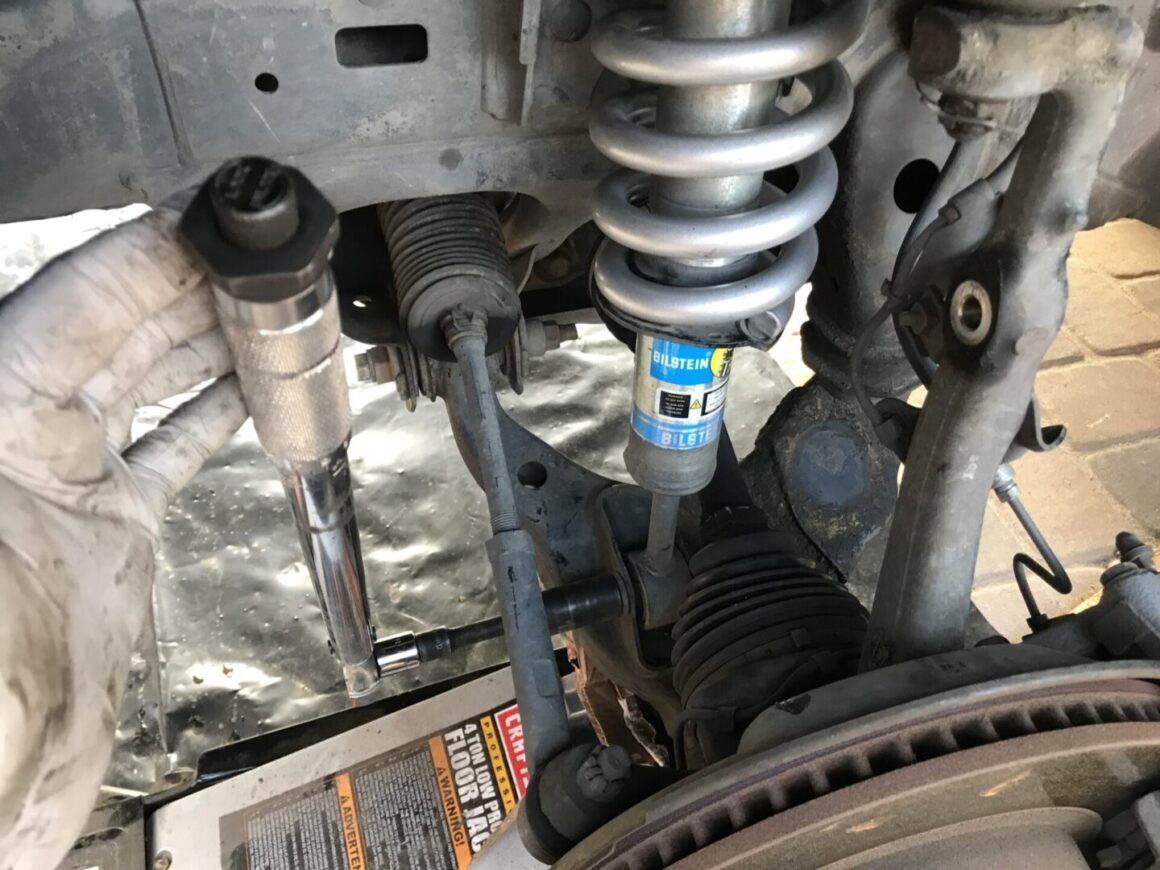
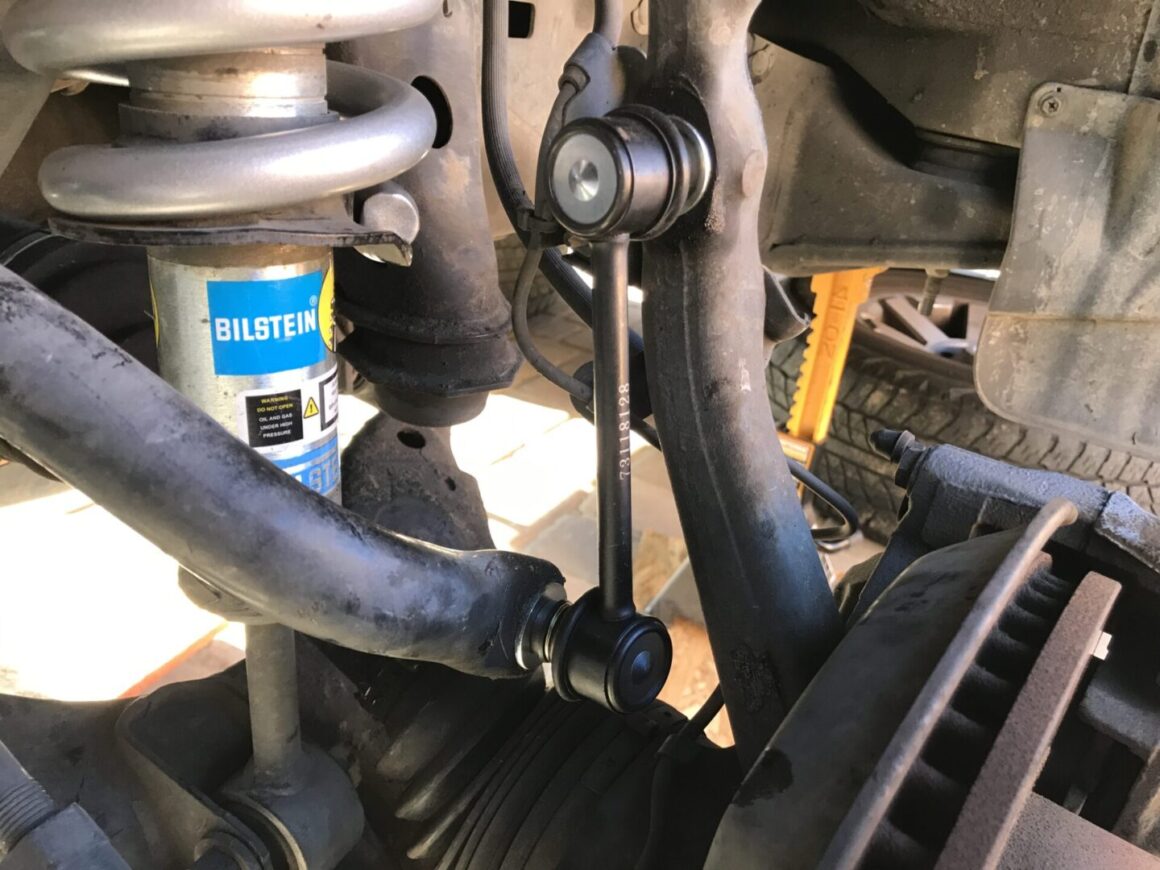
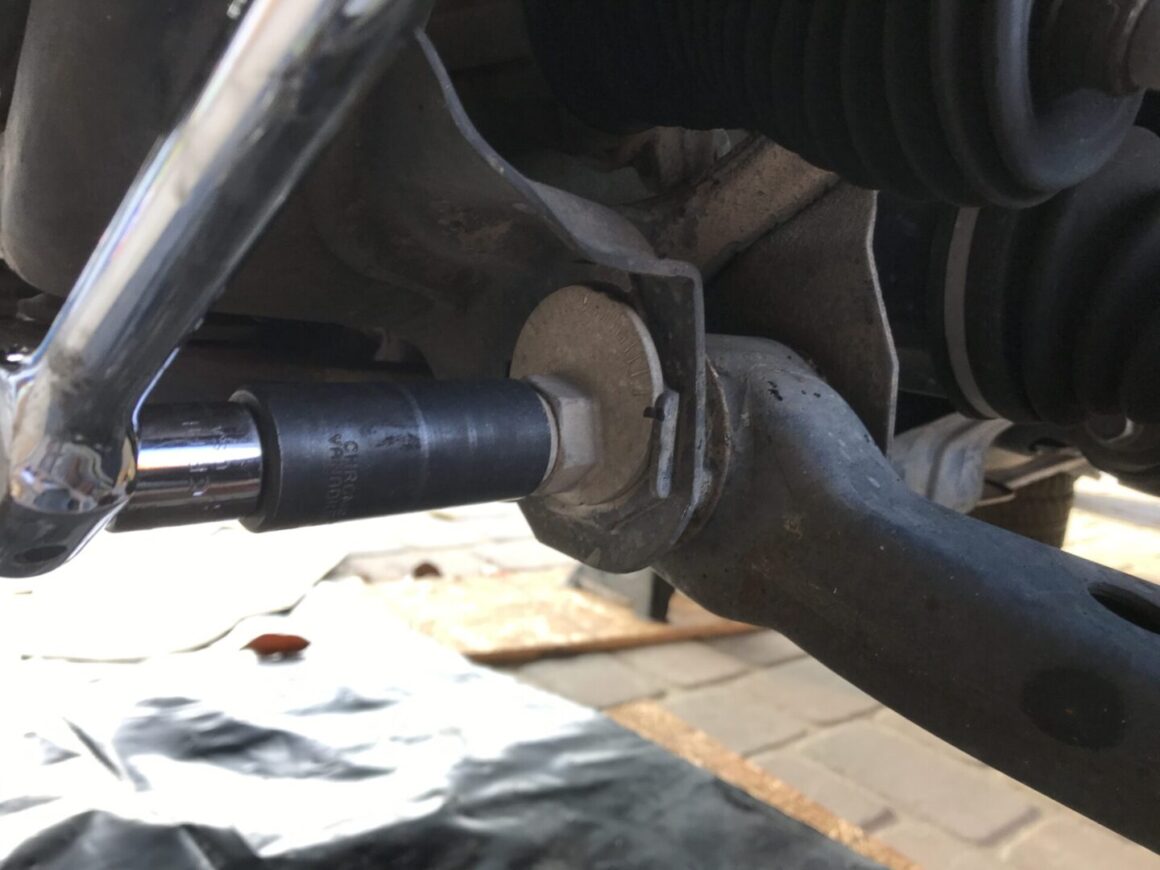
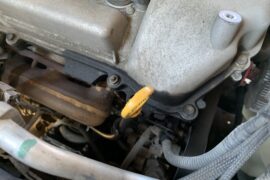
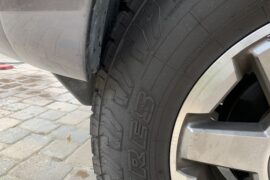

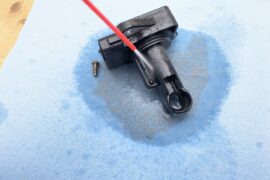
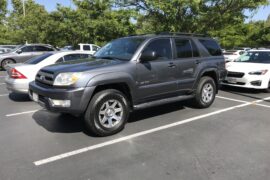
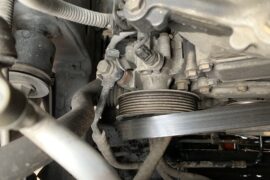
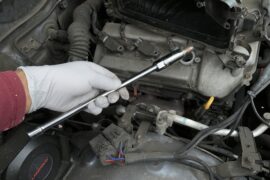

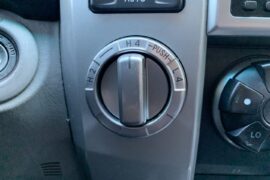
4 Comments
How does the set up ride? Looking at the same setup!
The setup is not bad at all, I love the Bilstein’s as they really firmed up the ride and the FJ coils gave a nice increased height (and evened out the rake). I’ve since changed them out to a 3″ Toytec lift kit (see my other posts), and felt that the springs were stiffer. So comparing them, I’d say the FJ coils are more OEM-like but they pair nicely with the 5100’s.
You stated you had problems with the FJ coils. Could you elaborate on what the problems were?
Thanks
Sure! I re-read that section of my post and realize it was incredibly vague…
So what happened was I purchased each coil from different sellers online, mainly because I was able to get better pricing this way. I ended up getting all the coils I needed, but I found that one of the coils I bought seemed to not perform the same as the others and it ended up sagging at that corner of the car. Because I bought them and didn’t install them until many months later, I couldn’t return it and ended up just throwing it out when I installed a 3″ Toytec lift kit.